Mongolia In The Footsteps Of The Nomad With Tim Cope
$6,199/person

Book this tour through our partner: World Expeditions
World Expeditions is an adventure travel and ecotourism company that offers guided small group trekking and adventure holidays.
Arrive in Ulaanbaatar
You will be met and transferred from the airport to the group hotel. Following an orientation tour of the city and a traditional Mongolian concert, we will meet in the evening for a group dinner and briefing. We will also be making our charitable donation to a representative of Autism Mongolia.Overnight: Best Western Premier Tuushin Hotel or similar
Fly to Western Mongolia
Following breakfast we transfer to the airport for a flight to the far western town of Ulaangom (the capital of Uvs province). Uvs is home to several ethnic groups, the majority of whom are Dorvod Mongolians who speak a dialect that differs from the Khalkh Mongol language of Central Mongolia. Uvs is particularly famous for its strong tradition of wrestling. As we fly in, you will see just to the north of the town a large body of water known as Uvs Nuur which is by area the largest lake in Mongolia. In Ulaangom we will lunch together in a restaurant before travelling by Russian four wheel drive to the village of Tarialan. The drive will be around one hour and just beyond the village at the entrance to the gorge on the Kharkhiraa river we will unload and make camp. Here we will meet the local team of horsemen with the camels who will be portaging our equipment and travelling with us over the Kharkhiraa pass.Overnight: Tented camp
Rest / Contingency day
PLEASE NOTE: This day a contingency day intentionally built into the trip to allow for uncontrollable changes to the itinerary such as the ever changing schedule of the domestic flights. Should the flights run to schedule, and there are no other hold ups (such as weather-related events) we’ll have have an extra day in the mountains. Your leader will determine the best options for the group depending on the prevailing conditions and flights.Overnight: Tented camp
Trek the Kharkhiraa Valley
Our route takes us into the mountains via a gorge through which the Kharkhiraa river flows. Aspen forest grows along the bank, and the combination of the mountain shadows and glacier-fed waters makes it a spectacular start to the trek. River crossings will be made to avoid cliffs (these cliffs appear on different sides of the riverbank as the river twists and turns hence the need to cross). These crossings will be made with the aid of horses, and perhaps tractors depending on the conditions. This is the way that the Khoton people migrate themselves from the plains near Tarialan into the mountains for summer. If we are lucky we will meet some families moving in camel trains into the mountains, children and babies strapped into the cane baskets high up on the back of the camels. The Khoton people are a strongly nomadic tribe numbering about one or two thousand and live primarily in the Kharkhiraa mountains. Their history is very murky. No one really knows where they came from or when although they believe they have Turkic origins. They have adopted many Mongolian customs, but their language is different, and their facial features differ from Mongolians. By evening we will have left the plains long behind and the canyon-like valley will have given way to a wide river plain. We make camp among ancient Turkic grave markers.Trekking: ~13km, +300mOvernight: Tented camp
A day of winding our way upwards when we may catch a glimpse of the ice-encrusted peaks of the high Kharkhiraa rising as spectacular pyramids and domes. Along the way we will meet with many nomad families who are making the most of the alpine pasture. We may have a chance to visit a ger and drink their ‘salty tea.’ Keep in mind that the Kharkiraa as a whole only sees about 30-40 foreigners a year. On our way today we will pass more Turkic grave marker stones and camp near a nomad camp on grassy steppe. The Turkic grave markers and ‘kurgan’ graves date back to the bronze age (about 2,000 years ago) and can be seen as circular piles of rocks surrounded by squares or circles. In one Kurgan up to 45 people would have been buried with many horses. They are the distant nomad ancestors of the Mongols and Khoton people. In fact, the Kharkhiraa are part of the greater ‘Altai’ mountain range which is said to be at the very heart of Asia. Iranians, Turks, Mongols, Kazakhs, and many other people trace their history back to the people who came from the Altai and moved down to the steppe to tame horses, yaks and camels. Even today the Altai splits Russia, Kazakhstan, China and Russia and is the meeting point of Buddhism, Christianity, Islam and Shamanism. In the evening we will enter a deep valley and the peaks above will be hidden from view. Camp will be made once again in the vicinity of nomads. Trekking: ~17km, +600mOvernight: Tented camp
Trek to the base of the Kharkhiraa Pass
After a possible stop among nomads for morning tea to watch how they make traditional vodka from yak yoghurt, the river valley makes a bend and suddenly before us the mountains will be revealed. The highest peak is Kharkhiraa itself at 4037m, encrusted in glaciers. This is a particularly surprising view since these particular peaks have actually been hidden until now. From here we make our way directly up towards the high pass in between the main peaks of the Kharkhiraa range. Near the base of the climb to the high pass we will make an early camp. There will be an opportunity in the evening to trek up towards the Kharkhiraa glacier at the headwaters of the Kharkhiraa River.Trekking: ~17km, +400mOvernight: Tented camp
Full day trek with optional climb
We wake early and make our way up a steep pinch on the final climb to the pass (quite steep, but fairly short and on foot poses no real risks). The pass itself is a wide plain. You have the sensation that somehow you have reached the clouds because many of the glaciers are well below eye level and the summits are only about 1000m above. Weather permitting we will lunch on the pass together with the camels. The view expands again when we reach beyond the highest point of the pass. Conditions permitting the distant ‘Sayan Mountains’ of Russia will be in view and far below a series of alpine lakes pock-mark the steppe. From here there will be the option of descending to camp on the south side of the pass or climbing up to 3600m on Turgen mountain. This trek, which is the most challenging and steep of the journey, takes us to a high ridge from where the extent of the mountains, including Kharkhiraa peak itself, will will be in view. Glaciers flow down from below your feet to the east and to the west is the airy drop down to the high pass. The mountains right before us form a breathtaking amphitheatre draped in ice. We make the descent via different route to camp and won’t arrive until late evening. Although this high trek is quite physically challenging and gives a real sense of mountain exposure it is a very safe route that anyone with a good level of fitness could complete.Trekking: ~15km, +1000m (including optional climb)Overnight: Tented camp
Full day trek via alpine lake on the Kharkhiraa mountain
We will spend two nights camped at nearly 3000 metres on the Kharkhiraa pass, allowing for a day to rest and savour the mountain landscape, or join an optional trek around Khokh Nuur – a spectacular, blue alpine lake at the end of a glacier on Kharkhiraa mountain. If the weather did not permit a climb to Turgen the previous day, this day can also be used to attempt a climb of the high ridge on Turgen.Overnight: Tented camp
Full day descent from pass
Having reached the high point of the journey it is time to begin our descent to the west. We make our way among a myriad of hills and alpine lakes and get a different perspective of the Kharkhiraa mountains. Eventually we will begin encountering gers and nomads once again and will make camp along a river valley.Trekking: ~19km, -600mOvernight: Tented camp
Full day trek down to the river gorge
A spectacular, and at times challenging day of trekking. The river that began as a trickle at the high-pass camp is now sunken deep into a gorge below. We trek along the steppe above following the routes of the nomad camel trains and eventually descend into a forested gorge. Here a stream cascades down among boulders. The smell of fresh forest and water will be a change from the past few days. Here we will make camp and celebrate with a wash in the stream.Trekking: ~17km, gradual descent for most of day, steep descent to camp into gorge.Overnight: Tented camp
Full day trek to Khovd Brigad via waterfall
A day of ever changing landscapes - from the river gorge and forest, to high plains, a sea of green steppe, a spectacular waterfall for lunch, and finally desert-like mountains and plains. We will meet more nomads and encounter ancient graves. Eventually arrive in the tiny settlement of ‘Khovd Brigad.’ This is actually just a summer camp of Khoton people in their gers (much like having a mobile village). The ‘winter village’ is Khovd Sum through which we will travel on our way out. By the time you set foot here it does feel as if we have come a long way. This is as far as vehicles can make it, and we will be met here by our Russian jeeps.Trekking: ~18km, gradual descent with some small climbsOvernight: Tented camp
Drive to Olgiy, sightseeing in afternoon
By jeep we will travel into the adjacent province of Bayan Olgiy. This is actually a province that is 90 percent Kazakh with a markedly different culture to the rest of Mongolia. Kazakhs are Muslim as opposed to Buddhists and we will see immediately that their ger homes are of a different shape and size. The Kazakhs trace their history to a break away group of Turkic nomads (who revolted against a Khaanate leader) about 400 years ago. Kazakh roughly means ‘free steppe rider.’ Since China, Russia, Mongolia and Kazakhstan agreed on borders in the 1930s-40s Kazakhs have been unable to migrate freely as they used to. Kazakh culture as a result however has been largely preserved in Mongolia, unlike Russified Kazakhstan. What we witness in Bayan Olgiy is truly a slice of history. Kazakh hunters even still train eagles for winter hunts of fox, wolf and marmot- a 2,000 year old tradition. Beautiful valleys lined with gers, deserts, snowy mountain ranges rising to 4000m and above, Bayan Olgiy has a rugged, timeless beauty. We will make it to the capital of Bayan Olgiy province, Olgiy where we will stay in a ger camp and have the opportunity to visit the museum and markets.Overnight: Ger camp
Drive to Tsaast Uul, stay with Kazakh Nomads
A four or five hour drive to the 4208m high Tsaast Uul (Snow Mountain). While approaching the mountain, following the Zuslan gol upstream, we have a great view of the snow capped mountain which with Tsambagarav Uul (4102 m) forms a mountain massif on the border of Bayan Olgiy and Hovd province. We will camp with Kazakh nomads at a plateau at 2400m at the foot of the mountain (at the Bayan Olgiy side of the mountain). Here, for those who would like, we may have the opportunity to sleep in gers with local families.Overnight: Tented camp
Full day trek in Tsaast Uul. Stay with Uriankhai minority (4 hrs)
We take the four wheel drives to a 3000m pass between the Tavan Belchirii Uul in the north (3657m) and Tsast Uul in the south. In this area during summer Uriankhai nomads graze their herds. The Uriankhai are from the same ethnic group as the Tuva across the border in Russia and the Tsataan (reindeer people) in the central northern part of Mongolia. They are actually from Turkic origin, but adopted the Mongolian language and Buddhist religion (but with shamanistic influences). Their living conditions are poorer than the Kazakh nomads - gers are not as large and herds are smaller. The Uriankhai are actually the original inhabitants of Bayan Olgiy (the Kazakh came to Bayan Olgiy during the 19th century from China, at that time Mongolia was part of China), but are now a minority of about 10% in Bayan Olgiy and live in the more higher and remote areas of the province. After setting up camp with an Uriankhai family we will take on a challenging trek up Tsaast Uul mountain along the edge of a glacier to around 3600m where there are spectacular views right into the Altai, and back to Kharkhiraa and Turgen in the distance. After a long, but gradual descent back down the same route we will reach the Uriankhai camp, where we started the trek.Trekking: ~15km, 600mOvernight: Tented camp
Trek in Tsaast Uul, to Tolboo Nuur (lake) camp with Kazakh nomads (4 hrs)
Depending on weather conditions, there will be an option to walk to an alpine lake, up another 3500m ridge, or just spend the day with the Uriankhai family. In the afternoon we will begin our descent by 4WD to Tolboo Nuur. En-route in the 4WDs we will climb three passes, Balkhit Uzuurin Davaa (2487m) and Buraatiin Davaa (2649m) and Ulaan Davaa (2214m) and finally reach the Tolboo valley. From the passes there are specaular views of the snow capped Sairiin Uul (3981m) to the south. North of the small village of Tolboo is Tolboo Nuur (Lake Tolboo), a high-altitude (2079m) freshwater lake. A monument here remembers that here a major battle was fought between Bolshevik and White Russians in August 1921. The shoreline is treeless and water is clean, but quite cold even in August. We will make camp near the lake.Trekking: ~8km, +450mOvernight: Tented camp
Drive to Olgiy, visit Olgiy market
Drive to Olgiy in time to visit Olgiy market in the afternoon. Olgiy itself is a fascinating mix of traditional Kazakh mud huts, gers, mosques and in the centre Soviet architecture. It has a distinct Central Asian atmosphere and as as the trading point, and capital of Kazakh culture in Mongolia is always bustling with both town dwellers and nomads who converge daily. Kazakhs are famous for their colourful embroidery and felt work and there wil be the opportunity to buy some of these handcrafts at the market. For our last night before heading back to Ulaanbaatar we will overnight in a ger camp, have the opportunity to wash in a local public house and enjoy a traditional Kazakh dinner.Overnight: Ger camp
Fly to Ulaanbaatar
Early in the morning we catch a flight to Ulaanbaatar. The afternoon is free to relax in one of the capitals sidewalk cafes, do some last minute shopping, or visit other sights such as the Winter Palace of Bogd Khaan. A special group dinner followed by a private concert.Overnight: Best Western Premier Tuushin Hotel or similar
Trip concludes in Ulaanbaatar
Trip concludes following breakfast. Transfers will be organised to take you to the airport.

Additional Information
Mongolia in the footsteps of the nomad with tim cope reviews.
Add your business today to reach The Outbound's audience of adventurous travelers.
- Local Adventures
- Tours and trips
- Camping Nearby
- Outbound PRO Membership
- Add your property
Mobile Apps

© 2024 The Outbound Collective - Terms of Use - Privacy Policy
New on Sidetracked:

- Australasia
- The Americas
- Mountains & Caves
- Oceans & Rivers
- Polar & Frozen Lands
- Canoe/Kayak/Boards

On The Trail Of Genghis Khan
An interview with tim cope andrew mazibrada.
In Sidetracked Volume Four, we featured a story about Tim Cope’s three year journey, on horseback, from Mongolia to Hungary, on the trail of Genghis Khan. His book based on the journey, On the Trail of Genghis Khan: An Epic Journey Through the Land of the Nomads (Bloomsbury) was awarded the Grand Prize in the 2013 Banff International Book Competition. Andrew Mazibrada caught up with Tim before he left for Mongolia again to learn more about his incredible journey.
Andrew: Where did your love of Russia, Mongolia and Central Asia come from?
Tim: In 1998 I abandoned a Law degree in Australia to study to be a wilderness guide in Finland. The twelve-month course focused on traditional Finnish culture in the boreal forest zone and tundra of the Sub Arctic. The year entailed, among other things, three expeditions (by canoe, foot and ski) into nearby Russia. They were journeys that opened my eyes to a world that had been more myth than reality for someone like myself who had grown up in rural Australia. Russia at that time was going through a chaotic period of transition – in 1998 there was an economic meltdown. Many people had not received salaries in six months or more, and some people I met were living off fishing, hunting, and the gathering of forest food to survive. One of our journeys involved hiring a Soviet era helicopter (which, in 1998, was outrageously cheap), packing it with 10 canoes and equipment for three weeks, and having the pilot drop all sixteen of us students in the wilderness to paddle back to civilisation.
During these first journeys to Russia, I was struck by the people who, whether they were families subsisting in remote, mostly abandoned villages, or in larger centres, showed an open-door culture of hospitality and a remarkable sense of spontaneity and celebration. The people of Russia were as diverse as the landscapes, and all attempting to reclaim their unique identities in the wake of the Soviet collapse. Over time I became intrigued by the connections between people stretching across this vast land based on a common environment and way of life. The mysterious eastern origins of the Finns inspired me too. I was beguiled by the thought that there were interrelated cultures and languages, and entire histories yet unknown to me that transcended modern state boundaries.
I began studying Russian before the year was out, and when I graduated I forfeited my ticket home to Australia. A friend, Chris Hatherly and I plotted to explore Russia and Siberia by bicycle. In September 1999, with a budget of just $2 a day, we set off from north of St Petersburg, aiming for Beijing. In the 14 months ahead, we experienced frostbitten toes, the woes of northern Russia’s snowmelt, and even found ourselves pushing the bikes along the BAM railway in Siberia to the north of Lake Baikal. Yet this adventure was a way into the heart and soul of the people – many of whom adopted us like long lost relatives. In the end, we would traverse Mongolia where I would become inspired by the nomadic cultures of the steppe zone. Seeds of future journeys were planted there.
You speak fluent Russian and you guide in Siberia and Mongolia. How did you come to learn the language, and learn enough of such a dangerous area to guide in it?
I’ve been learning Russian since 1998 when I studied with Russian students in Finland and made my first journeys to Russia. Over the decade that followed I spent the majority of my formative years in Russia, Ukraine, Mongolia and Central Asia more broadly, where it is crucial to know the Russian language. Apart from my 14 month bicycle adventure from north-west Russia to Beijing, I also undertook a 4,500km rowboat journey down the Yenisey River in Siberia to the Arctic Ocean, and later a three year journey by horse from Mongolia to the Danube River. These fuelled my passion for traditional cultures, drove my writing and film projects, and inspired me to take people to Mongolia and Siberia to experience life there first hand. I’ve been taking groups to the Altai in Mongolia, including two school groups, every year since 2008.
I don’t see Mongolia, Kazakhstan, Russia, and even remote Siberia as being dangerous places. When I was in Finland and studying traditional ways in which Finns lived in the forest, I learnt that what appears to be hostile wilderness to one person, is another person’s garden from which everything required to sustain life can be found. I take the same approach to people and society at large – by learning about the history, language and culture, one can learn how to see the world through different eyes, and therefore not only gain deep, horizon-extending understanding, but reduce risks. If I return to University one day I would love to study anthropology – what fascinates me most is the way in which cultures have evolved, hand-in-glove, with their environments.
What sort of relationship do you have with local people in Siberia and Mongolia? How important is it to have a strong relationship with local people when guiding?
When my horses were stolen on just the fifth night of a journey from Mongolia to Hungary, it felt like I had lost almost before I had begun. However I was fortunate to find the horses the next day. A nomad returned them to me, saying: ‘A man on the steppe without friends is as narrow as a finger… a man on the steppe with friends is as wide as the steppe.’ I needed to leave my baggage behind as a westerner, reach out of my dream world, and get to know people, however unfamiliar. Over the course of the next year, I came to realise just how fundamental that saying would be, not only for my survival (and that of my animals), but also for truly getting into the fabric of a place and understanding the people. It doesn’t matter whether it’s guiding, journeying, or just visiting a place – in my opinion it’s coming to know the people on their terms that is the most important aspect of travel. I have friends right across Central Asia, Mongolia and Siberia, and my friendship with them is the true measure of my travel.
‘A man on the steppe without friends is as narrow as a finger… a man on the steppe with friends is as wide as the steppe.’
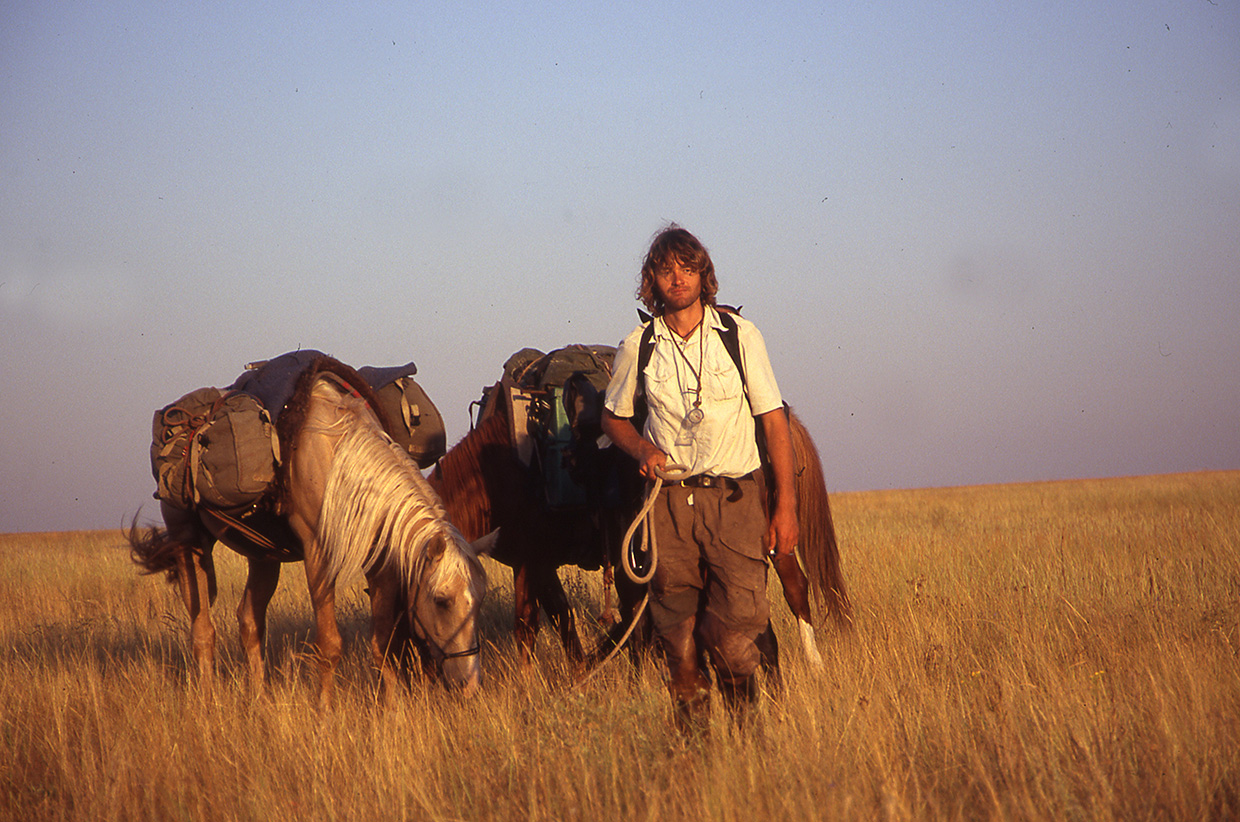
Tell us more about the Trail of Genghis Khan. First of all, what drew you to that epic trek?
The journey was in honour of the untold thousands of nomads who have made the great trek from one side of the steppe in far east Asia, to the western tip in Europe on the Danube River. Horseback societies have been traveling through these plains, deserts, and mountains ever since the horse was first domesticated about 5,500 years ago. The most famous of all were the Mongols, who under Genghis Khan set out in the 13th century and formed the largest land empire that has ever been.
With that in mind, the trigger for my journey was in September 2000, when I found myself in Mongolia on a bicycle en-route to Beijing. At that stage my friend Chris and I were 12 months into our recumbent bike trip, and I had fallen in love with Russia… but nothing could have prepared us for Mongolia. While pushing our heavily-laden bikes through miserable sand tracks in the Gobi desert, these nomadic people would just appear with great ease from over the horizon, then set off in whichever direction they pleased. It dawned on me that these people live in a world without fences, without private property, and a climate that ranges from -50 and colder in the winter, and 50 degrees of heat in the summer. They have little more than a few inches of tent felt to insulate them from those extremes. I felt like little more than a wimpy tourist pushing my bike along a predetermined path.
Over time I learnt more about the Mongols, and the heritage of the Eurasian steppe, and realised that, despite arbitrary national borders, the steppe still carries on unbroken to the west as far as the danube, unfenced, and with nomadic and formerly nomadic societies all connected by a horseback heritage. It was really very logical: to understand what life was like on the steppe, and what had happened to all the nomad societies in Soviet times, I would have to get on a horse and ride it to the Danube! Four years later I returned to Mongolia with exactly that plan.
What research did you do – not only about the region you would be travelling in, but also into the history of Khan himself, and his people?
Researching the history of the Mongols (and the many other nomadic groups that have been traversing Eurasia since the horse was first domesticated) was every bit as crucial as anticipating the logistical challenges.
The journey was based around the idea of riding from east to west with a troupe of horses (and the occasional camel), arriving in Europe to look back at the sedentary world through a nomad’s eyes. Genghis Khan inspired me simply because I think for most of us, we struggle with the concept that the ruler of the largest contiguous land empire in history was not a king in a castle sitting on his throne, but a nomad who was illiterate, and spent the duration of his life on horseback and in a tent. In our world, we tend to underestimate and misconceive the very concept of nomadic life and culture as something somehow backward and primitive. The history of the Mongols turns these assumptions on their head. The only way to come to know nomad culture I realised was to ride a horse myself.
To me an expedition is like field research. Writing has always been joined at the hip with adventure for me, so I set off with a concept, some questions, and came back after three and a half years with some answers but even more questions. To write the book I spent three years writing and researching that first draft, then another year rewriting.
The preparation time for my journey was about 18 months, which mostly involved coming up with the themes of my journey and researching them, figuring out the complex logistics of traveling with animals (in the end I would need to cross borders with three horses and my Kazakh dog Tigon), learning about horse equipment and getting the right kit, and of course raising the money. It’s true that I could have put more planning time in, but I came to the conclusion that with any project or adventure, it is important to put a limit on preparation time. Ultimately I could have planned for 40 years for this journey and never have been ready. It was all about embracing the challenges, and trusting that the unexpected challenges would equip me with the knowledge and skill to overcome the known obstacles that lay ahead.
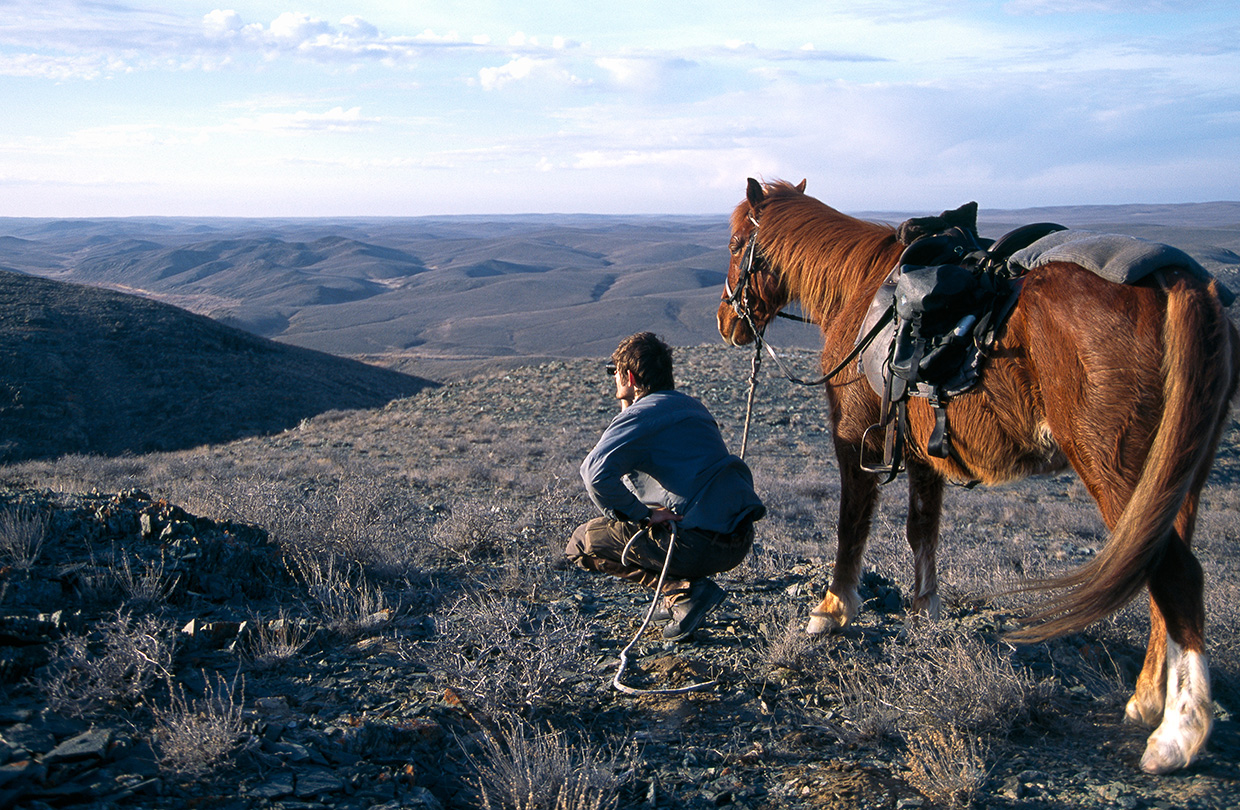
And what sort of challenges did you face on the Trail?
The dangers and challenges on this journey were varied. As a novice horseman, the horses themselves presented some serious risks – one the things I was scared most of initially, was falling off and injuring myself and having the horses abandon me in the wilds of the steppe (especially in the depths of winter). This never transpired, but in the course of my journey looking after the horses in all manner of conditions proved to be one of the greatest difficulties. Horse rustling was a major issue as I’ve already mentioned – as they say in Russian, the most dangerous wolf is that which walks on two legs.
Although the blizzards, and -40 degree temperatures, during my first winter were difficult, the most challenging environmental conditions for both the horses and I were in the Kazakh desert during the summer, when the temperature regularly reached well over 40 degrees. The only way to survive the heat was to ride all night, and seek shelter with nomads during the heat of the day. The day-to-day challenge of finding water and grass during this time became extreme, and in a state of increasing lethargy, there were many close calls, including one situation when a horse very nearly drowned in a swamp after it dived in to reach a patch of greenery. It was a reminder of just why the Mongols always mounted their conquests in the autumn and winter months, when the horses can eat the snow to hydrate, when it is possible to cross frozen rivers, and when there is no risk of the horses overheating.
Wolves were also a threat – in Mongolia my campsite was surrounded one night by wolves and in the winter I was constantly warned that wolves roamed in packs and would stalk my animals. As a precaution against this, I decided to carry firecrackers which I would light and throw out of the tent at night before going to sleep. I was told that this would help deter them from coming in close to the camp at night.
Isolation was a challenge too. It was the first journey I had ever carried out alone, and as it became clear that my journey would take much longer than the initial plan of making it to Hungary in 18 months, the feeling of aloneness became acute. I learnt the real value of friends and family. It took more than three years to eventually reach Hungary, by which time I was more than aware of the meaning of the Kazakh saying: ‘mountains never meet, but people do.’
I can’t leave this question without mentioning my adventure in Akbakai: a bankrupt gold mining village in central Kazakhstan where I became stuck for more than 3 months in the winter. Initially I stayed with two Russian alcoholics who caught street pigeons for Christmas dinner and gave me an introduction to the realities of the town, where most people relied on the murky world of contraband gold mining and trading for survival, and the less fortunate survived by catching pet and stray dogs to survive… it’s all in the book.
Did you have to learn skills you didn’t already have?
It is hard to overstate how much I needed to learn during this journey. When I first arrived in Mongolia, my experience on horseback totalled little more half an hour as a boy (when I was bucked off and broke my arm), and then a five day packhorse journey with a tour group here in Australia. It’s true that I did a lot of research on equipment, and how best to travel with horses, but nonetheless I can’t say I knew much about horses when I began.
The whole point of the journey was to ride the tough steppe horses that once carried Mongols into Europe and beyond. The descendants of those original wild horses, the steppe horses, have to forage for themselves all year round. These horses are the only kind that can tolerate the extremes of weather on the steppe – a thoroughbred for example wouldn’t last two days on the Mongolian steppe in winter. Proof of this happened in the 13th century when friar Giovanni di Plano Carpini, en route to Mongolia, was told in Kiev that he would have leave his European horses behind because “Tartars have neither hay, nor straw, nor fodder, and they would all die.”
Much more than that, though, it was by travelling with the steppe horses that I would be able to transcend the modern industrialised era, and sink into the distant past, free from the shackles of roads. After all, the needs of a horse (grass and water) have never changed, and I was counting on the horse to help immerse me in the mindset of the nomad.
You can probably gauge from this that I needed to learn not only to become a horseman but everything that entailed – learning to read the landscape for water and pasture and threats like wolves and thieves. Figuring out how to keep us all healthy and moving in extreme conditions. I needed to learn nomadic culture too, not just the landscape, and from the inside out. The horses became my conduit for both.
There is a list as long as the steppe I could write about the new skills I learned – another was coming to terms with a treeless landscape that does not offer fuel for heating or cooking. I understood the fragile balance between life and death on the steppe, and how too many animals can turn the grasslands to desert within a few years, but how too few means catastrophe – among other things they won’t provide enough manure (used for fuel) to keep a family alive through the winter. The most important were the steppe wisdoms, like the one I was told in the post-apocalyptic mining town of Akbakai in central Kazakhstan. Rushing is sin – ‘if you have to rush in life… rush slowly.’ It became my mantra and helped me overcome many problems as the journey ballooned from 18 months to three-and-a-half years.
I travelled together with a nomad man called Dashnyam, and the combination of glaciated peaks and rolling alpine pastures, punctuated by the white flecks of nomad tents, made it a magical experience.
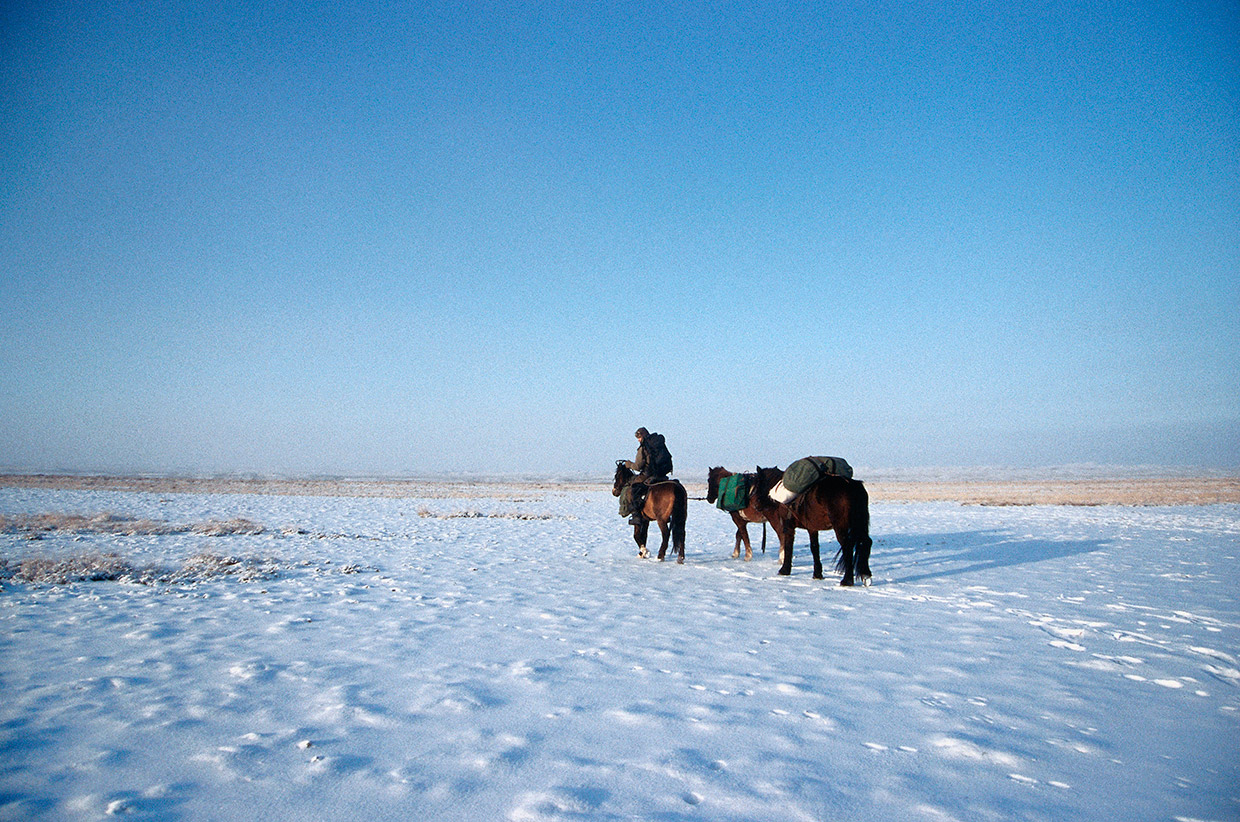
There are obviously so many memorable moments from this journey. Could you describe a couple of those for us?
My favourite experience, if I had to choose, was crossing the passes of the 4,000m peaks of Kharkhiraa-Turgen in Western Mongolia. Here, I encountered a place where nomads still moved with their camel trains from pasture to pasture, in a part of the world where mechanisation is virtually absent. I travelled together with a nomad man called Dashnyam, and the combination of glaciated peaks and rolling alpine pastures, punctuated by the white flecks of nomad tents, made it a magical experience. I have since returned to that part of the world many times, including this year, and although Ulaanbaatar (the Mongolian capital) has recently changed dramatically with the influx of mining wealth, life in the outer reaches of western Mongolia is largely untouched.
The hardest moment was the least expected. Having traveled for two-and-a-half years and with the toughest terrain and majority of distance behind me, I was in Southern Ukraine heading into winter when, via satellite phone, I discovered that my father, Andrew Cope, had just been killed in a tragic car accident. I left my horses for Australia immediately. Dad’s influence had been a huge factor in my decision to pursue a life of travel and adventure.
The irony for me at that stage could not have starker – here I was living an adventure that had so many inherent risks that many would consider it ‘dangerous’, yet my father had been killed just 50km from home in a car! To deal with his his death I drew on much of what I had learnt from the nomads about the transience of life.
In the end, I spent more than 4 months in Australia, grieving with my family – I am the oldest of four children. After this I made the difficult decision to return to Ukraine, and continue with my journey. Acutely aware of the fragility of human life, those last 1,000km to the end were some of the most emotionally difficult of any chapter of the greater journey from Mongolia.
What were the highlights of travelling with an animal as a companion on such a long journey alone? And what were the struggles?
The horses gave me insight, and a bridge if you like, to the land and the culture that can’t be substituted in any other way. Horses have finely tuned senses, and see and hear things coming long before we humans do. They helped me tune into the steppe, its moods, its inhabitants, the dangers, the good grass, where the water was, and so on. They are not to be seen as a mode of transport, rather as companions who are on the frontline. Through them I was tied to the land, and was locked out of cities (there are not many hotels these days that offer stables!). The horses, and my dog Tigon, also offered an unbroken connection to the ancient past and, in places like Kazakhstan, Russia and Ukraine, helped bring nomad traditions to life as I passed through.
It is, on the flip side, by far the hardest form of travel I have ever encountered. The easiest day on the horses was still tougher than the hardest of my bicycle and rowboat journeys, and I don’t say that lightly. On a horse the job doesn’t end when you climb out of the saddle for camp – this is where the real work actually starts. Apart from the general challenges of keeping the horses from dropping underweight, steering them through blizzards and heat, finding water and grass, avoiding thieves and trucks and wolves, border permits become infinitely more difficult with horses. I spent a total of six months languishing on borders with my caravan of animals, often unsure until the last minute as to whether I would be allowed to cross. It is also true that on a horse you lose the independence of other forms of travel – you are bound by where the good water and grass is, and when the horses are tired you cannot go on, even if it means hanging around in a dodgy part of the world.
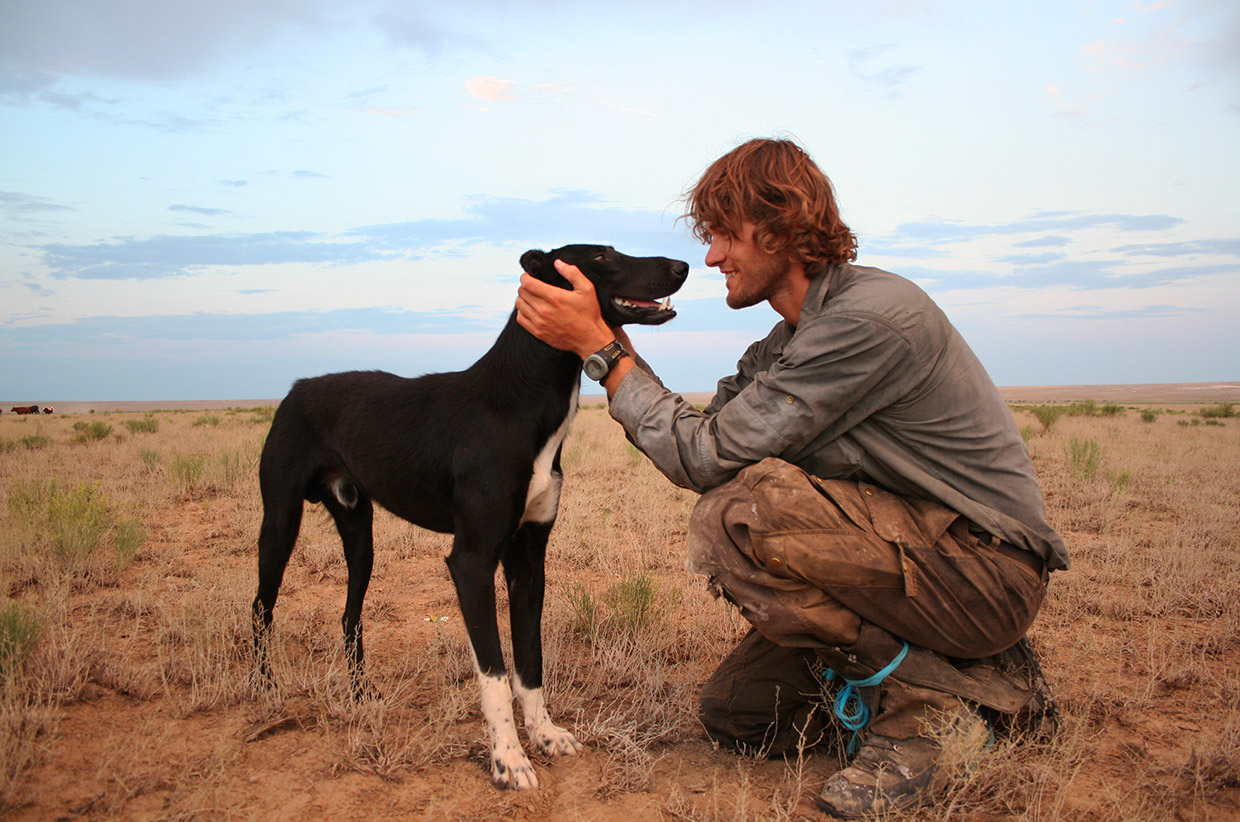
During the early stages of your trip you inherited Tigon a half-Kazahk Tazi and half-Shepherd dog from a local herder. Tell us about Tigon and how he influenced your journey.
On the steppe they say that dogs choose their owners and that is certainly how my relationship began with Tigon. Aset, with whom I travelled for 10 days, recognised Tigon’s interest in me, and before he left me, he said, ‘you need someone on this long road to protect you from wolves, keep you warm at night, and be your friend.’ That is when he gave me Tigon – a six month old pup, all skin and bones, a breed called ‘tazi’, which is a sight hound related to the Middle Eastern Saluki. I didn’t think that Tigon would survive more than a few weeks through the winter when the coldest temperature was -52 degrees. In fact he used to leap up onto my shoulders to get his paws out of the cold and sleep in my down jacket at night. But within just a few days of having Tigon I knew it was meant to be – I called home to Australia to discover our family dog of 15 years had died the same day.
Yet Tigon’s journeys ran parallel to my own, and he grew up on the road as I did. One of his most challenging moments came in Akbakai in the winter of 2004, when unemployed mine workers stole him to eat. Fortunately seven days later, moments before he found the dinner plate, he was rescued from his prison where he had been starved and beaten, and was caked in greasy muck. It took three weeks for him to recover enough strength to go on, and although I wasn’t there when he was found, I was told that for the first 24 hours after being rescued he was put in a sauna, and fed raw eggs and vodka.
Tigon appealed to the better side of people no matter who they were and I believe this was his secret for getting through to the Danube alive. Along the way he was hit by a car and almost killed, stolen at least twice more, and turned back by border guards. As he grew into a man, he learnt to fend for himself against packs of giant mastiff dogs, became a father, and burrowed his way into the hearts of those he met. By the time we were in Ukraine, Tigon had become much more than the passenger, and was so spoilt by local people that he would no longer accept bread from strangers unless it was first lathered with cream and jam!
For Tigon, travel, and the freedom of movement, the new horizons that every day brought were paradise, and as we went through all manner of trials and tribulations his mood swung in sync with mine.
What’s next for Tim Cope?
The last seven years have been focused around making a three-hour film series about my journey, and a book. My next project is a children’s picture storybook about my journey through the eyes of my dog Tigon, and a young adult version of the current book. Beyond that I have a few ideas that I’ve been working on, such as the gypsy trail from India to Europe, a year living, with nomads, Tibet and Kashmir, but I will cross those bridges when I reach them.

On the Trail of Genghis Khan has become an Australian bestseller, and in 2013 was the recipient of the Grand Prize at the Banff International Mountain Film and Book Festival, and also took out the award for best adventure travel title. In 2014 the book was shortlisted for the non fiction category of the Australian Book Industry Awards (ABIA awards).
Website: timcopejourneys.com Facebook: /timcopejourneys Twitter: @TimCopeJourneys
All photography © Tim Cope. Tim’s story ‘Wolf Totem’ is featured in Sidetracked Volume 04
Also on Sidetracked
- Last minute guaranteed trips
- Covid Info Hub
- Info nights & events
- How to book
Getting to know: Tim Cope
Tasmanian expeditions.
Trekking and travel inspiration
It would be an understatement to say Tim Cope is an inspiring person. He has journeyed over 10,000km from Mongolia to Hungary by horse, rowed 4,500km in a leaky wooden boat down the Yenisey River from southern Siberia to the Arctic Ocean, and cycled from Moscow to Beijing by bike - a 10,000km journey that took him 14 months.
Needless to say, he's incredibly adventurous - which is why he's been named the past Australian Adventurer of the Year, Mongolian Tourism Envoy and is the recipient of the Mongolian Tourism Excellency Medal. He's also the author of one of Australia's bestselling books, " On The Trail Of Genghis Khan: An Epic Journey Through the Lands of the Nomads " which won the 'Best Adventure Travel Book' and the 'Grand Prize' at the Banff International Mountain book and Film Festival 2013 .
We sat down with Tim to find out what exactly he finds so fascinating about travelling the world, in particular his passion for exploring Mongolia. From finding out his most transformative travel experiences, favourite words of wisdom from the Kazakhs, and how the spirit of adventure became so deeply entwined in his way of life, be prepared to meet an extraordinary human being and find out how you can join him on his next adventure!
- You’ve got a pretty interesting history and have seen a lot of Mongolia, Kazakhstan, Russia, and Siberia. Where was the first place you travelled? Was it off the beaten path or something touristy that inspired you to seek less packaged experiences?
I was fortunate to have a father who was an outdoor educator, so all my early journeys were in my home region of Gippsland. Hiking at Wilsons Promontory, cross-country skiing in the Victorian Alps, and surfing at Waratah Bay are some of my fondest childhood memories. However my first overseas trip, which I think influenced my path greatly, was trekking in the Annapurna region of Nepal when I was 16 years old (in 1994). I went to a small school in the town of Warragul, and the concept of travelling to Nepal was first put to students of our year level by my English teacher Rob Devling. Over two years we all had to earn our way to Nepal including raising money for the Fred Hollows Eye Foundation. The trek was actually run by World Expeditions, and the combination of physical challenge, culture and awe-inspiring landscapes that unfolded (for me particularly meeting the Nepalese people was the highlight) have remained the recipe for the kind of journeys that drive me on today.
- In 2004 you took off on a 10,000 km journey from Mongolia to Hungary by horse called “In The Footsteps of Genghis Khan”. That’s a pretty incredible journey – what are the biggest lessons you learned on that trip?
On a journey that ballooned from an 18-month plan to a three-and-a-half-year epic, patience was something that Nomads taught me. The Kazakhs have a saying - "If you must rush in life...rush slowly" - it is an approach to life that I have tried to carry over into my life since the journey. But perhaps the greatest lesson was the need to constantly appeal to the better side of human nature wherever I went. I had to make friends from all walks of life, and as a result both my inner and outer world expanded dramatically and I came to appreciate how important human relationships are.
- On this journey you experienced some significant moments; including receiving your loyal dog Tigon as a gift, being invited to the Khan’s palace in Crimea, and having your horses stolen at 2 a.m., five days into your 10,000km journey. It’s a hard ask, but what’s your most memorable moment on your trip?
Ultimately I think one of the most memorable moments was riding through the high Altai Mountains of Mongolia in 2004. I remember clinging onto the mane of my horse for dear life on the edge of a gorge only for a lady leading a six-camel caravan to come casually riding down from a labyrinth of rock. When she stopped she made the lead camel kneel down, and then revealed a young baby wrapped up in a cane basket high up on the camel's humps.
It left me with the impression that these people live so closely with their animals, in camaraderie with them, that they put more trust in their animals with their precious loved ones than we might do with fellow human beings sometimes in our own society. For me, this symbolises the symbiotic and harmonious relationship that nomads have with their animals and in turn with the land.
- Did you see a contradiction in being deliberately and geographically isolated from civilization yet technologically connected to the outside world via your sat phone and laptop?
Horses allowed me to transcend the modern era and slip back into a timeless age, free of mechanical transport and roads. The world is still a very big and enchanting place from the back of a horse, and the needs of a horse haven't changed since they were first domesticated on the Eurasian steppe about 6,000 years ago. At the same time, I did what any nomad does today - I took with me the technologies that could help me (and in my case help share my journey) but which don't compromise that horseback, free-roaming way of life. It was a contradiction in some ways, but I would probably argue that I wasn't trying to isolate myself from civilisation - I was trying to immerse myself in a different kind of ancient civilisation, that of nomadic society.
- You’ve won a number of awards which commend you for your spirit of adventure. Can you tell us a bit about your passion for embarking on journeys and why they are so important to you?
Journeys allow me to pursue my curiosity, expand my horizons, and ultimately bring me a greater sense of understanding on my return home. Even in the information age of the internet, there is no substitute for that very sensory experience of adventure.
- Most recently, you’ve received the Mongolian Tourism Excellency Medal and have been inaugurated as tourism envoy for Mongolia. What is it about Mongolia that resonates so deeply with you?
It is the only nation on the Eurasian steppe, and perhaps the world, where nomad culture still dominates. Out on the steppe time is measured more by the seasons, the availability of grass, and water, and less by hours, days and weeks. I believe the sense of harmony and sustainability with which the nomads live with the land holds valuable lessons for us all.
- You’ve been quoted as saying that “ To live in the city, in a world of abundance and disconnection where everything is controlled at the touch of a button, for me that feels like... death." What do you think we could learn from the nomadic cultures of Mongolia?
There is a Mongolian saying that certainly transformed my own understanding of the world and rescued me time and time again out on the Eurasian steppe. When, on the fifth day of my trip my horses were stolen, and then recovered, a nomad said to me "A man on the steppe without friends is as narrow as a finger... a man on the steppe with friends is as wide as the steppe." Nomads after all embrace the reality that only by being part of a community and getting along with others from all walks of life, is life survivable let alone enjoyable.
That is one of many lessons that I have learnt and have tried to convey in my book, film, and the ongoing series of talks that I give. Beyond that, as I mentioned in my last answer, I believe that the way in which nomads acknowledge they are part of a much greater web of life and live in harmony with their environment is something that is deeply moving and that I hope resonates with the participants of my treks.
- As an inspirational speaker, you show people that individuals are capable of great things. Is that part of why you take on these journeys and adventures?
Writing was my first passion even before travel - when I was 14 I was determined to become an author. I've always loved digesting things for myself in words and then sharing them with others and over time this has expanded to documentary films, photography and speaking. I like the way in which storytelling can engage people and allow them to step out of the frame of their normal lives even if it is just temporarily.
Apart from my father, who I think sewed the seeds of adventure in me as a young child, I would have to say that listening to Tim Macartney-Snape speak when I was 16 years old and then later watching his film and reading his book had a big impact on me. Authors such as Wilfred Thesiger and Joe Simpson also inspired me in different ways - the former for his fascination and admiration of nomad culture, and the latter for having the courage to pursue an unconventional path in life.
Related Posts
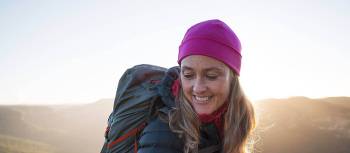
Comment ( 0 )
- Cookie Policy
- Strictly Necessary
- Performance
When you visit any web site, it may store or retrieve information on your browser, mostly in the form of cookies. This information might be about you, your preferences, your device or used to make the site work as you expect it to. The information does not usually identify you directly, but it can give you a more personalized web experience. You can choose not to allow some types of cookies. Click on the different category headings to find out more and change our default settings. However, you should know that blocking some types of cookies may impact your experience on the site and the services we are able to offer.
These cookies are necessary for the website to function and cannot be switched off. They are usually only set in response to actions made by you which amount to a request for services, such as setting your privacy preferences, logging in or filling in forms. You can set your browser to block or alert you about these cookies, but some parts of the site will no longer work. These cookies do not store any personally identifiable information.
These cookies allow us to count visits and traffic sources, so we can measure and improve the performance of our site. They help us know which pages are the most and least popular and see how visitors move around the site. All information these cookies collect is aggregated and therefore anonymous. If you do not allow these cookies, we will not know when you have visited our site.
These cookies allow the provision of enhance functionality and personalization, such as videos and live chats. They may be set by us or by third party providers whose services we have added to our pages. If you do not allow these cookies, then some or all of these features may not function properly.
These cookies are set through our site by our advertising partners. They may be used by those companies to build a profile of your interests and show you relevant ads on other sites and promotional activities through our newsletters. They work by uniquely identifying your browser and device. If you do not allow these cookies, you will not experience our targeted advertising across different websites or via newsletters.
You are using an outdated browser. Please upgrade your browser to improve your experience and security.

- Buy Tickets
- Join & Give
AMplify: Episode 8, Trailblazers Talks – Tim Cope
- Author(s) Alice Gage
- Category At the Museum
- Published 17 May 2016
- Read time 2 minutes
- Share this page:
- Share on Facebook
- Share on Twitter
- Share on Linkedin
- Share via Email
- Print this page

Join long rider Tim Cope for an evening on the Eurasian Steppe.
In June 2004 Tim set off on an epic journey: to ride horses on the trail of Genghis Khan, a 10,000 kilometre march from Mongolia to Hungary. The journey took him more than three years and led him deep into the fabric of nomad society on the Eurasian steppe.
Six months into the trip, a Kazakh nomad concerned that Cope was travelling alone gave him a puppy named Tigon.
“This little guy was meant to be the new spirit that would accompany me. We had lots of routines that kept my hopes up. In the winter time when we stopped I’d put him in my big canvas duffle bag while I went about setting up the tent and unsaddling the horses. As the pot began to boil, this bag would come to life and start hopping towards the petrol stove to where the dinner was.”
This episode of Live at the AM: Trailblazers Talks was recorded on 7 April 2016 in the Hallstrom Theatre at the Australian Museum.
Audio Transcript
Tehmi Sukhla : Good evening everyone, welcome to the Australian Museum. My name is Tehmi Sukhla, and I'm the director of Marketing, Communications and Development here at the Australian Museum. I would like to begin by acknowledging the traditional owners of the land on which we meet, the Gadigal people of the Eora Nation, and pay my respects to their elders past and present.
I'm delighted to welcome you to tonight's sold-out Trailblazer talk, recreating Genghis Kahn's journey from Mongolia to Hungary with Tim Cope.
Tim grew up in Gippsland, Victoria, and followed his childhood passion for adventure and exploration. He is trained as a wilderness guide in Finland, ridden a bicycle for 10,000 kilometres across Russia and Mongolia, and rode a wooden boat 5,000 kilometres through Siberia to the Arctic Ocean.
Tim has combined his experiences with a fascination for traditional cultures and history and a love for writing, photography and film. His work includes Off the Rails , published by Penguin, and documentaries for the ABC in Australia and National Geographic. He has also directed, filmed and co-produced a documentary series for French and German TV.
In 2006 he was awarded the Australian Geographic Adventurer of the Year, and in 2007 honoured by National Geographic as a cultural ambassador at their annual awards in Washington.
Tim has worked as a guide for eight years in Mongolia and Russia, and in 2015 was made the International Envoy for Mongolian Tourism in recognition for his work celebrating nomadic culture.
Tim's most renowned journey was an odyssey by horse on the trail of Genghis Kahn from Mongolia to Hungary. His book about the journey, On the Trail of Genghis Kahn , won the grand prize at the 2013 Banff International Mountain Book Festival. Would you please put your hands together for Tim Cope. [Applause]
Tim Cope : Thanks Tehmi. I wanted to start tonight way back during my first experience in Mongolia where the embryo of the idea of this horseback journey really was seeded. And that was when I was 20 years old and I found myself in the middle of the Gobi Desert, which of course is this big, vast expanse of sand dunes and empty horizons that stretches right out through Southern Mongolia and what is now Northern China, or Inner Mongolia.
When this photo here was taken we were already twelve months into a journey by bicycle from Western Russia. We'd set off with my mate Chris on a budget of two dollars a day to do about 10,000 Ks to Beijing. By this stage we'd been through the early snow. In fact just a few weeks into the trip we were in a small village called Babushkina when this lovely old woman, Baba Gulya, she stopped us in our tracks, wouldn't take no for an answer, took us inside, laid out this beautiful meal of hot mushroom soup. And as I was sitting there slurping down this beautiful soup, I noticed this tingling in my toes, and I discreetly took the socks off and there were these great big purple extensions on the end of my big toes.
She looked down and screamed out this word in Russian, which means frostbite, and she then picked up our shoes, which were just cheap running shoes, threw them out the door—it had been minus 20, 25 for the last few weeks—she then dragged me down to the local doctors clinic, laid me down on a bench where a doctor just went 'snip, snip' and these little bits of flesh were tossed into a bin.
And he looked down at me and said, 'Well, don't worry, I'm not going to charge you for this operation. It's free, but when you come back from Australia next time would you mind bringing me a baby kangaroo as a gift?'
Fortunately the frostbite wasn't too bad. I ended up spending two or three weeks in this wonderful little village tucked up in the northwest corner of Russia. And it was a way in to this community. We spent this time living with Baba Gulya and her friend Sveta. She started to really teach me the local Russian dialect. She'd wake me up with three shots of vodka before porridge every single morning, and she became, with time, my surrogate Russian grandmother. In fact many years later during the horseback journey, I went through Crimea, and since that time on the bicycle journey she'd moved there to live with her daughter, so I spent another few weeks living with her. And although she was almost 80 at that stage, we were still having two or three shots before breakfast.
Unfortunately she died two or three years ago. After that time, we'd been through the melting snows and where the road ran out pushed our bikes along what's called the BAM Railway, the Baikal-Amurski railway that goes to the north of Lake Baikal, and eventually all the way across to the Pacific.
This is one of the people I'll never forget. This man got out of his truck one day, his steamroller, and blocked the road. He said, 'You're not going any further until you have three shots of vodka with me.' And I looked back and said, 'Well it's a bit difficult. I've got another 80 kilometres to ride, it'll be very hard.' And he became mad, beetroot red, looked down and said, 'Well, you think it's easy to drive a truck after three shots of vodka?' And something in that moment crystallised for me about the difficulties that this society was going through. Russia was going through a very difficult transition since the collapse of the Soviet Union, and they were just taking every opportunity to embrace a connection with someone, to take on board friendship, even with a passing stranger.
For me, in the end, travel had become merely a vehicle for getting to know cultures, and getting under the skin of landscapes. But anyway, here we were in the Gobi Desert, only a month to go to Beijing. When this photo was taken there were a couple of reasons to celebrate. We'd just broken our record for consecutive days without a wash, which was 25 or 26. But much more importantly, despite the fact that the bike had snapped in half for the second or third time and the stove had long broken so we were gathering dried dung to burn as fuel, we were starting to see nomads for one of the first times on our trip. These people that would just come galloping from over the horizon, they'd say hello and then gallop off to wherever they pleased, with this incredible sense of freedom, leaving us feeling like wimpy tourists pushing our bikes through a land where it can really be minus 30, 40, even minus 50 and below in the winter. In that same area it can sometimes reach 40 or 50 degrees of heat. And these people don't have nice central heating and insulated walls, they've just got a few inches of tent felt to protect them from those extremes.
It's also a land of no fences for thousands and thousands of kilometres. And I wanted to know more. More than just following these miserable wheel tracks that had a predetermined path. And when I got back to Australia after this journey I learned more about the Mongols who under Genghis Kahn had ridden out, in the 13th century, all the way to Europe and even further, eventually creating the largest land empire that's ever been. And it struck me that our stereotype of the Mongols may be these violent barbarians that came galloping in from the East bent on destruction. Yet any conquest in any empire building process is inherently pretty violent and pretty destructive.
So why should the Mongolian culture be defined by their conquest any more than any other culture on the planet? So when I was walking the dog with Mum one day back in Gippsland, where I grew up, I said to her that I'd like to ride a horse from the capital of the Mongol empire, Karakorum, all the way across the Eurasian Steppe to the Danube River in Hungary, a journey of about 10,000 kilometres. And she stopped and turned around and almost fell over because, like me, she understood very well that I couldn't ride a horse. In fact I was still terrified of horses at that stage.
Tonight I'm going to tell you a little bit about what transpired. I planned it to take 18 months. It took in the end more than three and a half years. And I hope you get a little bit of a glimpse into this very different world. For me, Mongolia, the Steppe, even Russia, it's a place that exemplifies the fact that we might live in an era when heroic exploration and putting flags on new continents is long gone, but discovery's never just been about mapping new places. It's about human discoveries, about meeting people and bringing back those learnings to our own society and changing one's perspective of the world.
This was the man who sold me my first horse, Ochitabat, and he and his mates looked on and said, 'What are you going to do when the wolves attack, and what happens when the thieves steal your horses? Why aren't you carrying a gun?' But that's not the kind of journey I'd imagined. I'd really just pictured slapping the gear on the back of my animals, compass in one hand and just heading off into this unadulterated horizon. In fact one of my mates had reassured me that all I had to do was keep following the sunsets and when the people started speaking French it would mean that I'd gone too far.
But ultimately, when you start any adventure you're trusting that by taking a risk the odds will somehow fall your way. But the trip didn't start particularly well for me. This was about five days into a journey I'd been planning for 18 months or perhaps even longer.
I woke up in my thermals, jumped out of the tent, I could hear these horses galloping into the night and then someone kind of sniggering along with it, and they were stolen, they were mine. I went over and the only thing I could find at that stage was a bell that, ironically, a vet here in Australia had said I should put on the horses at night so that when the thieves approach the bell rings as the horses becomes nervous, it wakes me up and I get to rescue them in time. In fact the sound of the bell ringing had simply led the thieves straight to my camp in the dark, they'd slipped the bell off, and galloped off.
The previous evening everything had seemed perfect. I'd landed in this utopian environment, a sea of green. There were people bringing their animals down to camp, children galloping around bareback, ladies out milking the yaks and the goats. But at three in the morning that was a very different feeling. But fortunately, one of my friends had told me earlier that in Mongolia if you don't solve your problems before dawn, then you never will. So I set off, and I had one of the three horses remaining, and about two hours later this great big herd appeared from over the horizon, and there were my horses at the tail end.
This guy came up to me and intimated, 'Well you must have tied your horses really badly. They came to me themselves.' That didn't explain where the hobbles had gone, and the halters and everything else, but it didn't matter. He took me home—these are the tents of the nomads, known as yurts or gers, in Mongolian, that nomads once lived in all the way across the Steppe as far as Europe—introduced me to his family, slaughtered a goat, and eventually taught me this remarkable saying that would prove to rescue me and the horses on many occasions in years to come: 'A man on the Steppe without friends is as narrow as a finger, and a man on the Steppe with friends is as wide as the Steppe.
In hindsight, it could have been these guys who stole my horses. I'll never quite know. In fact there's a saying that my editor of my book told me that in retrospect would have been another good wisdom to carry with me.
He always said, 'Be less offended and more curious.' And certainly that would have to be the case for me, because horse rustling was just part and parcel of life out here. My horses would be stolen three or four times more during the course of this trip, and eventually I'd learn that if someone's trying to steal your horse out there you should take it as a compliment. It means that you've got a good one. But more than that, if you've had your horse stolen you've got the right to steal it back, although there are traditionally rules: you have to steal it back in broad daylight for it to be honourable, but more than that, you're allowed to kidnap the wife of the thief until everything's resolved.
Now this came back to me and crystallised in a very unexpected way months later in Kazakhstan. I was riding along this lake called Balkhash. It was cold and miserable. It was below zero and there was no snow, so I went to an industrial railway line where there were some track workers. That night one of the guys came to me and said, 'I've heard on the wind that there's someone from the village 40 Ks away who's coming out to steal your horse tonight.' And I brushed it off. It was just scaremongering. Obviously no one knew I was out here. But sure enough, three in the morning there's all this crashing and banging. I leapt out, I could just make out the shadowy figure of someone stumbling off with my horse. What had happened was this guy had jumped on my horse, galloped off, and then discovered that my horse was still tied up, unfortunately for him by the front lower leg. So he'd been somersaulted to earth. I got some of the track workers to come out and help me. It was the same guy who had warned me about horse thievery earlier in the night.
The next morning…afterwards they said well there's only one thing to do in this situation, it's to drink vodka. So they did that and in the morning he managed to give back, eventually, my head-torch and a pair of hobbles that he'd stolen, and he said to me, 'Tim, well done. According to [buddemtah?] you've stolen your horse back. Now please, just take my wife and take her all the way to Hungary.' [Laughter]
And I rode off terrified and really angry at these guys, because to lose a horse out here would be like losing your boat on the sea. But on the other hand there was nothing malicious. It was all part and parcel of life, and it was a privilege to be part of such an ancient tradition. And that really laid out the reality of my trip. It was always a fine line between friend and foe. Often it was one and the same person.
But coming back to this first experience. Of course, from that saying I have learned that I needed to get out there and start meeting the people, understanding their ways and making friends, and once I did that and asked if I could camp in the vicinity of their own homes, they saw me as a guest and someone to protect. I started to understand a little bit more about who these nomads are and why it is of course that they do pack up their homes three or four times a year at least and move with the seasons, on camels, sometimes yaks towing carts, children included.
In fact this photo here was taken on a day I'll never forget, in the far west of Mongolia. I was in the Altai Mountains with these great big 4,000-metre peaks of ice kind of jutting up above the cloud. Huge crumbling cliffs, avalanches here and there. That's another reality of nomads these days. This lady came down from this environment leading a camel, and the lead camel knelt down, and she pulled back this sheepskin and there was a baby on the back of it.
And it left me with this extraordinary sense that these people live so close with their animals in such camaraderie with them that they put more trust in their horses and their camels with their precious loved ones than we might in our society sometimes with fellow human beings. And of course the reason that people do live so closely with their environment and the animals are the bridge to that environment, is that it's proven to be the only sustainable way of living for the last five or six thousand years.
If they were to put up a fence and build a house it would be suicide. It's too extreme, it's too marginal. They need to move to where the grass is. Sometimes 600, 700 kilometre round trips a year.
And here we are again. Of course they're not only experts at adapting their lives to that very fragile ecosystem, but at integrating modern technology into that traditional life. And most people do have satellite dishes and 12-volt batteries, solar panels and wind generators.
At this point of the journey I was beginning to learn that there would never be a perfect day. I could expect problems big and small no matter what happened. You might be wondering where the inspiration of mine began. Someone who grew up in Gippsland and ended up in Mongolia. Well, I think I was lucky to have a father who was into the outdoors. He was an outdoor educator for Monash. I grew up often having holidays at the beach, hiking down at Wilson's Promontory in Victoria, cross-country skiing. Nonetheless, Dad wasn't very happy when I handed back my law studies after one semester at ANU. But over the years he and Mum became quite proud of me and they could see that travel was more than just an in-between thing. This was going to be a way of life.
The greatest thing I learned growing up I think was that going out into the wilderness, it's a place where life itself is distilled. Where all of the unimportant things melt away and you're left with your personal qualities, and it makes me realise that in life of course it's working on yourself that matters most, not about the latest technology that you can surround yourself with.
On looking back, Mongolia was a bit of a honeymoon. It was four or five months riding through beautiful summer weather. But Kazakhstan was a very, very different prospect. A country about two-thirds the size of Australia, and like our country very, very sparsely inhabited in the interior.
More than that, Kazakhstan was a very different place to Mongolia for another reason, and that is that in the 1930s this country that stretches from the Altai in Siberia as far as geographical Europe on the Caspian Sea, was once the largest nomadic nation on earth but it's no longer the case. In the early 1930s Stalin's industrialisation campaign reached the Steppe. The nomads had their animals confiscated; within two winters about one-third of the population, or about 2.2 million nomads perished in what was essentially an artificially created famine—or, some would argue, genocide.
So I was entering a country that was going through a very difficult transition. They didn't have that traditional life to fall back on. By this stage the Soviet Union had collapsed but they didn't have that structure that had originally replaced the nomadic life, the realities of the Soviet Union. So these people were scraping a living in very tough times.
My first job was to find new horses. It's tough to find a good horse in any country, but eventually I was offered this one, Ogonyok. He was a big, five-year-old gelding. I could see he'd make a great pack horse but what I didn't realise until later was that he was also such a paranoid, jumpy animal, that he would sometimes rear up and bolt away merely at the sound of his own fart—which didn't give me a lot of confidence, given that I was in a similar frame of mind as a newly arrived foreigner.
But I was also offered this horse to buy. His name's Taskonir, or Brown Stone. He was a 12-year-old gelding. He'd been around a while, he was a work animal. He'd spent his whole life bringing fish down from an alpine lake to market, and I knew he'd keep the others in line when they misbehaved. And sure enough, these two horses, Ogonyok and Taskonir would carry me for the next three years all the way to Europe. And it's not hard to understand why in the past people were always buried with their best mounts if they outlived them, because they believed that not only does the horse carry them into life, through life but, they hope, charging into the afterlife.
[ Audio from journey : There's two metres of snow up here in eastern Kazakhstan in winter. If I don't move I'm going to be stuck here till March. But it's just bloody hard. Your fingers just get totally frozen tying up the saddles, and the tent's just covered in rime and frost. It's just cold. It's like the earth's just been entombed in ice.]
At this point I wasn't to know that it was going to be the coldest winter in about 40 years in northeast Kazakhstan, and it was the start of what they call a dzud , these very harsh winters that sweep across once or twice a decade. This was early November. You can see everything becoming encased in ice. This then melts fractionally and then refreezes, forming what appears to be like an ice-skate rink over the land. Very, very steel-hard ice. They say that horses that survive until spring in these conditions are sometimes naked by that stage because they resort to eating the hair off each other's bodies.
Luckily I was taken through my first couple of blizzards by this man, Aset. And after ten days together, as we were saying farewell, he said, 'Tim, you definitely need a friend on this long road to Hungary. You need someone to keep you warm at night in the tent, and most importantly, to protect you from the wolves.' And that's when Aset decided to give me Tigon. And Tigon was this six-month-old little pup who was leaping off the snow onto my shoulders just to get his paws out of the cold. So I didn't think he'd survive more than a couple of weeks. Fortunately it was only later on I realised that he was thinking, 'well thank God Tim's protecting me from the wolves' as we went to sleep at night. But it didn't really matter. After a couple of days Tigon and I were inseparable. And ironically I called home on a satellite phone one day after saying goodbye to Aset, and discovered that our blue heeler of 14 years at Mum and Dad's place had just died, and it was almost like this little guy was meant to be. This was the new spirit that would accompany me.
And we had lots of routines that kept my spirits up. One of them, in the wintertime, was the first thing I'd do when I stopped, I'd put him inside my great big canvas duffle bag and then I'd go about setting up the tent, unsaddling the horses, and then later, as the dinner began to boil, this bag would come to life, and it would start to hop towards the petrol stove to where the food was. And that was usually the cue for the nightly treat, that was cutting off a little bit of salo, which is a salted or smoked pig fat, and opening the zip and this little snout would come out and snatch it out of my hands. I used to also paint vodka on his paws as a local method to keep frostbite at bay.
We headed south to escape the snows, those early snows, but went too far. This, conditions that were far below zero, resemble what they would call in Mongolian har dzud , or a black dzud. So it's essentially a drought, and animals die a lot quicker of dehydration, obviously, than they do of lack of food. In this environment I often came across these three or four hundred-year-old graves. I was always told that I should sleep inside them to ensure that the old spirits of the steppe would protect me as I slept. I never slept inside them, but I used to camp nearby. I used to lunch inside them out of the wind. And one of the reasons that they gave me such comfort was the thought that once upon a time there'd been a thriving nomadic community here. I was on the right trail.
Unfortunately Kazakhstan these days only has about 2% of the population who live that nomadic life. But there are those nomads still out there like this man, Buzibek, who'd been herding for 50 or 60 years. And to see him climb up on his camel in the morning light was the picture of that symbiosis between animal and man that's really defined the cultures of the steppe for the last five or six millennia.
At this point in time I was starting to have a very different sense of place, of movement, of time itself. You can see these two little white dots here, they could be there one day and then gone the next. Though I had a GPS, I had a reasonable map, so I could know where I was in terms of coordinates, but unless I could find people, unless I could find grass or water, then all of that was meaningless. They have this wonderful saying in Russian that, 'If you never know where you are in the first place, then you can never be lost.' And that certainly started to take on more meaning. But they also have this wonderful way of just transiting through life and transiting through the landscape, and I think this is derived from an old Indian saying that the mounted nomad's possessions were for using not hoarding. And to them life was a bridge: one should cross over it, not build a house on it.
The snows did come, and that gave me a wonderful freedom. I could ride out in whichever direction I pleased, as the horses ate the snow for hydration, and obviously I could use it for cooking and drinking as well. We reached a place called the Starving Steppe, and this was starting to get a bit cold. It was getting below minus 30, possibly minus 40. And when this photo was taken I was in a routine of waking up in the morning in the pitch black. I'd crawl out of the tent. I'd look over first and usually Tigon would be bundled up in my down jacket and he'd have this little beard of ice around his whiskers. Then I'd spend three or four hours packing and then I'd only make it sometimes 12 or 13 Ks before sundown.
But this was a time when wolves became a serious problem too, and I used a local method to keep them at bay.
[ Audio from journey : Just before I go to bed I throw a few firecrackers out of the tent door into the dark as a way of scaring off the wolves, and hopefully it works.]
Well, it did work. However, the first time I filmed myself lighting this firecracker I lit it before opening the tent door, and of course it exploded right there and put a hole through the entrance. But as I said, it'd take three or four hours to pack, and at this stage of the journey it was getting a little bit desperate. This was two days to Christmas. One of the horses was developing an abscess, it was going a bit lame. The tent was falling apart, the GPS was going broke, and I did not want to be alone on the Starving Steppe for Christmas. So I picked a dot on the map, a place called Akbakai and got there as quickly as I possibly could, imagining all the while that there'd be this family waiting in a beautiful little romantic agricultural village. There'd be a roast on the table. There may even be a barn full of hay and grain. But this was what greeted me at dusk on Christmas Eve. A place otherwise known as the Place that God Forgot.
Akbakai was a very remote gold-mining town. The only people I could find were these two shadowy figures on the outskirts who took me into their hut. They thought I was a lost Russian geologist. And in the morning this was the first thing I saw. This was one of my hosts, Grisha, and his mate Vidka. And together they were fairly renowned alcoholics who had unfortunately lost their truck-driving licences delivering some equipment to the mines many years before. And they said, 'Tim, don't worry about it. Sit back. You're going to have a wonderful life in Akbakai.'
I went out to look for food. There was none. There was no grain or hay, being a gold-mining town and a very bankrupt one at that. I came back, they'd caught a couple of street pigeons and boiled them up for Christmas. And that night they told me some fairly gruesome stories. I remember Grisha on the right hand side at one stage, I don't know what time in the morning it was but he shook me and he said, 'Tim, you've got to meet my wife one day. You won't find anyone more honest than her.
The time that she murdered our friend in the kitchen with a knife she called the police herself. Only another eight or nine years and she'll be out of prison.'
So I crawled out of this hut the next morning, called on the satellite phone back home—Mum and Dad and my two brothers and sister were sitting out watching the Sydney to Hobart and probably the Boxing Day Test on telly, 26 degrees of sunshine, probably some red wine in their hand, and I wanted to be home. At least for a day. I would have killed for it. But it just was never possible. I had four hungry mouths to feed other than my own, and what I didn't know at this point was that this was just the beginning of my difficulties.
Eventually I'd be stuck in Akbakai for three months. I tried to leave many times. I got the flu, the petrol stove broke at one stage, I lost all my fuel, I came back. Then Tigon was stolen by some unemployed mine workers who were catching stray dogs and pet dogs to eat to survive. In fact through the process of searching for Tigon I discovered that most of the community was surviving on the contraband gold mining industry—rappelling 400 metres into old shafts, digging up the gold, and also paying bribes to the processing plant for tailings. And the going rate was about $10 a gram for gold. Everyone had their little backyard labs. The police would try to catch people in the act and if they did they'd pay a bribe and the business would keep going.
Tigon was rescued, fortunately, after about a week. He was revived with a vodka and raw eggs and put in a sauna for a day, and three weeks later he was well enough to move again. But during this period of time I was starting to get a little bit depressed. I didn't think that perhaps this journey was worth it. This wasn't the picture of romantic nomad life I'd come for. And yet the local people kept saying, 'What are you rushing for? You're only six months behind schedule.' But there was wisdom in their words.
They have this wonderful saying that if you ever have to rush in life, rush slowly. And it's true that in this environment it wasn't about the nine to five or the Monday to Friday. Time was more measured in the availability of grass, the rise and fall of the sun, the seasons that dictated everything. And most importantly, for me, time wasn't necessarily money. And it was liberating to realise that and then accept that this journey was going to take a lot longer than I initially thought. But that was okay.
And sure enough, in the early springtime the snow melted and I had my chance to move out. The greenery was coming back, it was time for those great big shaggy camels to have their spring haircut.
[ Audio from journey : Spring's also the time of camel shearing. They use the wool of the camel to make their winter clothing. A single camel can also feed a family for months. This is what you call a camel in the lounge room. A helluva lot of meat and you can see the two humps from the Bactrian camels sitting right here behind me.]
So that reminds me, looking at all that meat, of this fantastic Mongolian belief that it's only fair that as meat eaters, humans should be turned into eaten meat themselves after they die. In some parts of Mongolia people's bodies are still taken up to a mountain top for the wolves to devour.
And they believe that only by the wolves ingesting that flesh can the souls be set free.
After two weeks, after leaving Akbakai, the weather changed quite dramatically. In fact it was reaching 30 degrees by nine o'clock in the morning. People warned me that ahead lay at least 40 days in a row of above 40 degrees. And when that began to kick in it was time to rethink my routine altogether. So I started riding almost exclusively at night. I'd saddle up after sunset and try to ride right through till dawn. But I never quite made it. I'd normally catch a couple of hours of sleep, in the saddle, or even better on the ground like this, and wake up with Tigon in my arms or even, more importantly, a great big camel looking down at me.
They say in Kazakh that the first time as a guest you're a friend, second time you're part of the family, third time—well, you can stay for life. And that's genuinely the way I felt that I was treated. I probably stayed with 90 to 100 different families, families of different kinds. And eventually I came to understand this very cryptic but important belief that mountains never meet, but people do. I think the nomads can appreciate more than anyone that whilst it's great to go out there and challenge yourself in these very difficult conditions, there's nothing like coming out of that open, inhospitable space into the intimacy and warmth of a home, to be with friends and with family. The most important trait of being human, of course, is our capacity to have relationships.
It took about 14 months to cross Kazakhstan. I'm kind of racing through the trip now. Another six months in Russia.
Unfortunately I was stuck on the border here for about six weeks. At one stage the Kazakhs let me through and then the Russians turned me back. The Kazakhs wouldn't let me back in. So I was stuck in no-man's-land for a while until six weeks later I eventually got the right permits to continue my journey. By this stage, it felt as if I'd made it somewhere.
[ Audio from journey : Made it to the sea! First time on the horse that I've seen the sea since I began. Almost two years ago. Real crispness in the air, and the horses are moving a lot faster, a lot more easily.]
For me, arriving in the Crimean Peninsula was like landing in horse paradise. There was this waist-high grass, flowers…Tigon was off chasing hares and foxes, his favourite hobby. You'd just see him kind of porpoise-ing through, and the horses were eating with the gusto of hungry lions. We hadn't seen this much food in thousands and thousands of kilometres.
Crimea is a remarkable place, really. It's where the Eurasian steppe abruptly meets the sea, and for that reason it's always been a strategically important place too, because the sea trading routes go from there to the Mediterranean and much further afield. The Mongols actually ruled Crimea way back for about 300 years. The Turks have ruled it, the Romans have ruled it, and as many of you would know, the Russians took it over in the 18th century from the Ottomans and more recently they took it over again.
Unfortunately there was a lot of tension at the time when I was in Crimea, mostly between ethnic Tartars, the indigenous peoples of Crimea, and Russians. In 1944 the Tartars had been deported to places like Uzbekistan and Siberia, justified by Stalin's assertion that they were the descendants of Mongolian barbarian invaders from many centuries before, which wasn't the case. They remained in exile until 1989, and on their return in the 1990s they were met with that similar kind of aggression and belief that the Tartars didn't really belong there.
Unfortunately when I was there in one particular case there was a big protest, the Russians came in with lots of violence, the army eventually closed the town down and it was only luck that no one was killed.
From the Crimean Peninsula we headed into Ukraine and I thought at this stage you might be interested in how I filmed this trip and how I took the photos. There wasn't a film crew for the vast majority of the trip, although right near the end in the Carpathians I got a grant from the ABC, and a wonderful cinematographer called Michael Dillon came and joined me for two weeks on foot.
But most of it was done like this with a tripod, so this kind of photo, for example, was done by setting it up on the tripod, pressing the button, and then I'd have 20 seconds to run to the horse. And in a roll of film—this is all done on transparency—there'd be shots of me chasing the horse, halfway up the horse and so forth.
And by this stage, speaking of Tigon, he was no longer just a passenger. I think he saw himself as this fearless guide taking me across the Eurasian Steppe, and he was so spoiled that he would no longer even accept bread from strangers unless it was lathered thick with cream and jam. At one point in time he was actually offered his own hotel room free of charge, and he kind of climbed up and gave me a look as if to say, 'Well, Tim, you're on the floor tonight, mate.'
On another occasion I got this email from the Moscow Academy of Sciences. I'd had my horses and Tigon on a farm for a while in southern Russia, and it was a polite letter suggesting that I should start sending child maintenance payments back to Russia because of all of the puppies he'd left behind at the research farm. So Tigon had certainly grown into a man in more ways than one.
If I'd seen these kind of photos before I set off on the trip I might have just turned tail and gone home. But the reality is that these mountains, the Carpathians, that were the last big geographical barrier on the road to Hungary, they were one of the places I'd known all along where things could go wrong very quickly. But now that I'd arrived, I realised that the journey, with all its unexpected challenges, had equipped me with skills and knowledge to make this a pleasurable experience. To pass over these same snowy sections of mountains, peaks, forests, where the Mongols had tread all those hundreds of years before. And it gave me a little glimpse of just how hardened and skilled these nomads had been after their long, long journeys. And also how developed their mental map must have been of the world around them, especially compared to Europeans, who at that stage were living in parishes like goldfish in a bowl. Most people probably hadn't walked much further than the neighbouring parish, whilst these guys had traversed much of the continent.
Just before I go on towards Hungary, I wanted to give you glimpse of these wonderful people called the Hutsuls, who live way up in the high peaks of the Carpathians. Every summer they take their animals to the high plains. Their horses have been proven through DNA testing to be the descendants of those left behind by the Mongols when they turned around way back in the 13th century and went back towards Asia.
In particular I wanted to show you just a little clip of a very special man, an 80-year-old hat maker.
[ Audio from journey : It's a common trait among nomads to colour their life with art. Vasil, who is now 84, has been making traditional hats from the age of 16. He makes about 100 every six months, and every single one is unique. And when the Hutsul people wear their clothing, you get the impression that they're not just wearing it for display. It carries the very soul of their way of life, of their ancestors. He even decides to show me his coffin that he personally hand made. Everyone does it up here in the Carpathians when they're about the age of 40. He's got his best clothes in there because he wants to be well dressed when he goes into the spirit world. They remember here that life is transient.]
Last year Vasil unfortunately passed away, and he lived up in this very small hut you could only reach by horse or foot, and he was put in that coffin on the back of a horse, balanced quite delicately, and taken all the way down to the valley for a funeral procession and eventually burial next to his wife.
So here we were, finally looking over the Carpathian Mountains to Hungary. I'll just take us down to the end now. From the Carpathians I headed down to the Hungarian plains, and after a six-week battle on the border with bureaucracy, they actually let my horses and Tigon across. And it was a very different kind of welcoming than it had been a send-off in the start of Mongolia. In the beginning no one had known I existed, and yet now word had spread and I didn't have to put up my tent more than a couple of times for those last few weeks.
For the Hungarians my journey had special meaning because their ancestors, the Magyars, had also come riding out from the east in the ninth century on horseback from southern Siberia to what we now know today as Hungary.
[ Audio from journey : I'm introduced to Kassai Lajos, who's famous in Hungary for reviving the art of horseback archery. He's dedicated his life to living by the ideals of the ancient nomad warrior, and he's got thousands of followers worldwide. It's awe inspiring. He's able to shoot off six arrows in 12 seconds at a full gallop, and hit the target every time. It was these warriors that demolished the feudal systems of Europe and paved the way for light horse cavalry that was to become the standard for European armies of the future.]
One of these guys, a man called Tamash, came to me one evening and said, 'Tim, I've been discussing your journey with my friends and we've decided one thing. We think you're mad to have done it, but we can see in your heart and mind that you've become a horseman, you've become a bit like one of us.' And that was one of those many experiences in the dying days and weeks of my trip where it felt as if the journey had come full circle and it had been crystallised.
[ Audio from journey : By the time Tim arrived on the Danube he'd become a celebrity, welcomed by diplomats and world media. Tim had achieved the first known crossing of the Steppe in modern times. He had learned from the nomads the challenge of the future for them, like for us, is to balance traditional knowledge of the land with the aspirations and needs of the fast-changing modern world.]
So finally I had my opportunity to make those last few steps. Mum had come from Australia, there were the ambassadors from various countries. In fact after the Mongolians and the Kazakhs got up and sang these beautiful renditions of 'Life on the Steppe', 'Nomads' Horses', the Australian ambassador got up and recited 'The Road to Gundagai', completely out of tune. But it was still a wonderful experience just to be there and reflect back on where this had all begun. And it still is extraordinary to me that what began as a small embryo of an idea, talking to Mum one day on the dirt road in Gippsland, had become not only my whole life but it had pulled in the lives of hundreds of other people. It would be fraudulent to suggest that it was my trip, that it was a solo journey.
I'd set off not knowing a soul, as I mentioned, and I think that was one of the really driving forces of this trip and any trip for me, the prospect of meeting people who had no idea that I was coming, that I existed, and to arrive on their doorstep in a state of disrepair; hungry, tired, with hungry and tired horses, and over a cup of tea or a vodka, create a sense of friendship, a sense of friendship that can't be replicated in any other kind of context.
And by the end it was of course the people that was the true measure of the trip, as the difficulties and the distance and everything else kind of melts away into irrelevance. There were times, like with Grisha and Vidka when I had to learn when to pull the reins in tight and ensure that the journey stuck on track. But on the other hand, with Grisha and Vidka I learned when to let go and accept that the way that I was approaching this, my mentality, didn't work here. Grisha and Vidka were wonderful people at the heart of them, despite their problems. Unfortunately Grisha on the right…no, Vidka on the left, he starved to death in 2006.
Not enough food and too much vodka. And Grisha died we don't know exactly how, but he went off to get firewood one day in the cold.
I was rescued later, by the way, by a man called Baitak, and he was the person who rescued Tigon when Tigon had been stolen, and I owe my life, truly, to Baitak. He looked after the horses when I was ill. His own dog was stolen and eaten in the process of looking for mine. At the end of the trip I gave Baitak a call, and in 2010 when I was writing the book I had a long conversation with him and he told me about the fate of these guys. And then I lost contact with Baitak altogether. I desperately tried to phone him, his email, nothing was working. And then two weeks ago I got a message on Facebook from his son, who was only about nine or ten years old back then. And unfortunately, two months after talking to Baitak he'd died of a heart attack.
For me, keeping in touch with these families and these people and remembering their contribution to my life is probably the most important thing in terms of giving back when it comes to travel. Travel's a mutual exchange. It's not a one-way street where you go and take and you come back with experience. You also leave, if you can, good memories for those and friendship is the most important one of all. I'd learned to be very patient amongst the nomads. I think they did change me in the way that I could be resilient and look to the longer term. I couldn't have done it without Tigon, as you all know now. And the journey had prepared me for those big challenges that I thought at the start might bring me down.
What I didn't mention, though, is that the biggest challenge of all was the least expected, and it came only 1,000 Ks from the end, just when I'd gotten through all of the winters and the deserts and the mountains. I was riding along and got a message on my satellite phone to call home, and that's when I discovered that my father Andrew had unfortunately died in a car accident here back in South Gippsland.
I got on a plane, left the horses behind, and spent five months back here. It was the toughest time of all of our lives. I was the oldest of four kids and there came a point when I had to decide whether to continue the journey, go back and leave my family behind, or stay longer through that grieving process. And obviously I returned and by the end of the trip I was looking forward more than ever to coming home and really appreciating time amongst friends and family.
There hadn't been a single day that had gone right on this trip. And in fact the very last day, as if to remind me of that, I camped 15 kilometres from the finish line, everything was set. I knew the path, the horses were in good shape, I thought nothing can possibly stop me now. And then at 12 o'clock at night just as I was preparing to lay back under the stars and reflect on this three-year journey, Tigon came running back into camp smelling like death. He'd just rolled in something dead in the local vineyard. So I spent my last night of the trip with a bottle of water and some shampoo, trying to clean him in my tent, and of course he shook off everything and it covered all my clothes, my sleeping bag, everything with the smell of death. It was lucky one kilometre before the finish line where there was all the media and the ambassadors waiting, I ducked into a village and hosed him off, and he was just getting dry by the time we turned the corner for the final straight.
For me, adventuring is all about being flexible. Planning's important, but I'd initially had an Excel spread sheet. I figured if I did 5 days a week, 20 Ks a day, I'd make it in 16 months. Couple of months for holidays, there was my trip; back after one winter. But it wasn't of course the case. I was now in the saddle for more than three years, and the Danube River was looking back as if to say well, what took you so long? And it's true that in the modern era you don't have to get on a horse to ride from Mongolia into Europe.
It could have been a few hours in a plane, a few weeks in a car, I could have walked faster in the end, but it's really not the point.
Even though we live in a time when you can see every part of the planet down to the square inch through Google Earth and so forth, there's no substitute for getting out and having that very sensory experience of the world. And certainly, had I not got in the saddle in the first place, that whole world of generosity, culture, history, landscapes, would have simply passed me by without meaning.
The destination only ever means something, of course, if you've been through a genuine journey to get there in the first place. So thank you very much. [Applause]
Tehmi Sukhla : Thank you, Tim. Now we've probably got about five or ten minutes to take some questions from the audience.
Audience question 1 : [inaudible]
Tim Cope : Mostly Russian. The backstory is that when I was 19 and I was studying in Canberra, law, I desperately wanted a way out. And I found a wonderful course called the International Wilderness Guide course, and I ended up deferring my law degree for another year and going to Finland, where I studied together with Russians. And part of our course was in Russia itself. I started becoming more and more fascinated by the place. In 1998 Russia was going through a very difficult time. The economy collapsed, the country defaulted on all their foreign debt, and the rouble went through the roof. There was no cash in the shops and the banks, and we were doing our first expeditions there at that time. And in the middle of all that, the people were just so hospitable and spontaneous and big smiles on their faces, and I knew this country, the biggest one on the planet, was a place I wanted to get to know.
Particularly I think because growing up as a Gippsland boy, an Australian, I don't think I learned anything about the former Soviet Union in school, and it seemed a travesty, and I wanted to know.
So yeah, Russian was the most important language. And then in Mongolia that wasn't so useful. I learned a little bit of Mongolian. It wasn't great, but the language of the horse was really important. So they always knew what I needed long before I did, particularly in those early days when I was still learning to ride. I'd often go to sleep at night halfway into the tent, wake up with the toothbrush still in my mouth and toothpaste dribbling down my chin, I was so exhausted every day just trying to learn the horse. And the people knew how to help me, they knew everything. I didn't need anything else.
And that was a different experience than being there on the bike, where I was more like an alien novelty, I was strangely familiar for them.
Audience question 2 : Tim, when you were sitting in the saddle and you're looking out to nothing, how did you occupy your mind for so many days and months?
Tim Cope : Lots of people have asked that, and have asked, you know, did you listen to music—but it may seem difficult to understand but there was not a single moment in the day when I wasn't fully occupied. When you've got three horses, navigating, you're looking at the land, you're looking for grass. Every moment you can, if you find a little patch of grass you stop, you eat, you're on the lookout for everything—the sign of tracks, the sign of animals. I was on the lookout for Tigon constantly. He'd be going out like 20 K radius journeys all the way around me and come homing back in every now and then.
But I had to be very, very acutely aware of everything, because even if an animal startles the horses, you could find yourself teleported 50 metres in a second. Had to be careful all the time. And I wanted to be. I wanted to be aware.
I didn't want to miss a single chapter of the story of that landscape. Towards the end of the trip sleeping in houses was a shock. I'd wake up and feel like I'd missed a whole chapter of what had gone on during the night. There was something about being engaged.
So I didn't have a lot of spare time. When I did, I was probably learning languages. I did have a couple of books with me at times, but it was busy. And if I did get a moment just to sit back and relax then I just sat back and let it in and let my mind go completely blank.
It was much harder to come back than it was to start the trip. An even steeper learning curve…I'm answering your question, aren't I? I think the reverse culture shock's always more difficult. And particularly when I first came back I was obviously without my animals that were left behind. I was here feeling like a fish out of water. I had no money, no one could really relate to the experiences I'd been through. And then tragically some of my diaries were stolen from my car in Melbourne, in St Kilda, which I never got back. And it felt like I'd just been…I couldn't get any lower, really.
But then I began writing, so I started to write my experiences down. I made a sample chapter and I started going through all the footage for the film. And that process of sharing the story with others, it made me understand what it was that was so important about my journey, what I'd learned and how I could relate it to others. It suddenly became relevant in a way, and I think that's the most important part, for me, of readjusting to society. And it still is. It took two years to make the film and four years to write the book, and it's ongoing. I go back to Mongolia every single year and I'd actually employ a lot of the nomads that I met back in the day.
One of them, Dashnyam is the guy I gave a horse to as a gift on the first trip I went back to Mongolia in 2009 to his area I was really excited to see my horse and meet him and tell him about the journey and how it had gone, and he explained that they'd just eaten my horse the previous winter, so I just missed out. But being able to go back and forth has also helped me adjust a lot.
I think the way in which they interact with the land, they see themselves as being part of a much bigger ecosystem, a bigger web of life. They're only playing one little role. And in that way I think they offer a model of sustainability and putting our lives in perspective. The planet wasn't necessarily just laid out for humans to devour, as seems to be the case in some of our approaches to life. And the sense of patience, resilience—I never heard a nomad complain about anything, and if there are people on earth who have the right to complain, it's probably them. I tried to carry that uncomplaining attitude along but I knew I could never stick to it like them.
They're an incredibly hardened people. Every year I go back, like last year it was very cold, it dropped to minus 24 degrees during an Australian Geographic trip I took last year in October, and the nomad guides we had with us who I've been working with now for a few years, they just put a bit of felt down, they lay down and made a sandwich, put another bit of felt over the top and went to sleep toasty and warm. Woke up in the morning and got on with things. Just incredible.
Audience question 3 : What happened to Tigon?
Tim Cope: I thought you'd never ask! But no, it was a really difficult decision at the end. If we could possibly have the screen back up…at the end I gave the horses away. I could never bring them back. But there was a slight chance I could get Tigon home, but I wasn't sure. He was a Kazakh dog, he needed to become naturalised as an EU citizen, which would take six months, and then beyond that it would cost $10,000.
So I came home, I was broke, I used to get these stories—and by the way I gave the horses to an orphanage and they then set up a riding program. They converted the soccer oval into a running yard. This is one of Tigon's progenies that was donated to the orphanage.
I've been back to Hungary two or three times, most recently in December, to see them, but I got these stories like Tigon's chased horses for half a day and the farmer I'd left him with, he'd taken all the dogs with him and they sent a taxi out at one stage to pick all the dogs up and bring them home.
But eventually a year passed and I got a letter in the mail from Australian Quarantine. I had permission to bring him home. And that's when I got him, with the help of, by the way, a lot of people who came along to fundraising events. I was over in Perth and did some big talks, and we raised about $8,000 in a couple of weeks. I got him in a taxi from Budapest to Vienna and then he was put on a plane to Dubai, and this was the moment that he touched down at the Spotswood Quarantine Centre in Melbourne. So Tigon should be somewhere near here…come on Tigon… [Applause]
Yeah, Tigon's now actually 12 years old, but he's still running 20, 30 Ks a day if he can, and he's showing absolutely no sign of slowing down. And the next project will actually be to write an illustrated children's book about him. I'm working with Alison Lester, some of you may know her, on a book.
Alison's actually got one of Tigon's puppies, and Tigon's puppy's made it into one of her books already. Had two legitimate litters and a couple that weren't as legitimate. In fact going back to your question about adjusting to life back here, when I went to live up in northeast Victoria, where I live now, renting this little cottage, I woke up on the first Sunday morning. Tigon was there, and there was this guy banging on the window of my house. I thought what's going on? I went out and he said, 'If your dog trespasses on my property one more time I'll call the police.' And I thought this is crazy. In the Steppe they don't even have collars or leads. Trespassing's not really possible because it doesn't exist. But a couple of weeks later the reality is that Tigon impregnated that guy's dog, so I understood that there are some occasions when fences and private properties should be respected. So Tigon and I both had to adjust to a more fenced-in world, but we also get to go up where we live, up in the mountains on a regular basis, where he has total freedom.
Audience question 4 : [inaudible]
Tim Cope: Very, very sentimental. But in a way that might not appear as sentimental as we approach. I guess in our society animals become more pets. For them, animals are their comrades, they're part of the family. They rely on their horses not just for their physical wellbeing but their spiritual wellbeing. All Mongolians believe that they have a spirit horse which guides them and helps them through the difficult stages of their life.
And if any of you have been lucky enough to go to a small naadam in Mongolia, where you have the three what they call the manly sports—horse riding and wrestling—the way in which they venerate the horse is unbelievable. You see men who in 364 days of the year are tough as nails, they almost cry when their horses come out and they have the fermented mare's milk showered over the top, and when the winning horses are mobbed by the people who take the sweat of the stallions and rub it over their faces.
The horse is what keeps them going in life. They couldn't be more proud. But they might have in some cases 500 horses. They don't have names for them apart from the particular pattern or colour of the coat. And they don't necessarily pat them and stroke them and treat them in that kind of way. And certainly my Mongolian horses and my Kazakh horses, they never wanted affection. They never really wanted you to pat them. They were just more like, I want to be out with my mates having fun. But underneath they were incredibly loyal horses. Once you got on to them it felt like they would give their life for you. They took me through so many different difficult conditions. But they were kind of like toughened old men. They weren't going to show their affection openly. That's the way I interpret it. They're very, very different horses to European horses that would come up for attention and maybe a carrot. It's a different world in the Steppe, but no, horses are…what can I say, they're almost worshipped as if they are gods themselves.
Tehmi Sukhla: Thank you. Can you please put your hands together for Tim Cope. [Applause]
Trailblazers Talks, presented by Australian Geographic, brings together Australia’s greatest living explorers for a series of inspirational events. The 21-week series was held on Thursday evenings at the Australian Museum from 25 February – 14 July 2016.

The Australian Museum respects and acknowledges the Gadigal people as the First Peoples and Traditional Custodians of the land and waterways on which the Museum stands.
Image credit: gadigal yilimung (shield) made by Uncle Charles Chicka Madden

Barbra Streisand Asks Melissa McCarthy About Ozempic Use in Public Instagram Comment

Taylor Swift NOT Attending Met Gala, Reason Why Explained

Shonda Rhimes Shares Real Thoughts About 'Barbie' Movie After Originally Saying 'No Comment,' Reveals How Many 'Bridgerton' Seasons There Will Be

NBC Renews 5 TV Shows, Cancels 3 More & Announces 1 Is Moving to Peacock for 2024-2025
Tim McGraw Set List for 2024's 'Standing Room Only Tour' Revealed

Tim McGraw is currently on the road with his Standing Room Only Tour and he’ll be entertaining fans through June!
The 56-year-old country singer, who is touring with Carly Pearce , is performing a ton of hits every night and we have the set list available for you to peruse.
Before the tour started, Tim promised to perform his biggest hits along with songs from his latest album Standing Room Only and he’s definitely delivering the goods.
Tim will soon be visiting cities like Boston, Charlotte, Chicago, Kansas City, Atlanta, Philadelphia, and Los Angeles. Make sure to check the concert listings to see if he’ll be in a town near you!
Head inside to check out the set list…
Keep scrolling to check out the full set list… **This set list is representative of previous shows on the tour and might not be completely accurate for every show.
1. Truck Yeah 2. Southern Voice 3. All I Want Is a Life 4. Tiny Dancer (Elton John cover) 5. Just to See You Smile 6. Over and Over 7. Shotgun Rider 8. One Bad Habit 9. Watch the Wind Blow By 10. Something Like That 11. Where the Green Grass Grows 12. Standing Room Only 13. Red Ragtop 14. Highway Don’t Care 15. I Like It, I Love It 16. Felt Good on My Lips 17. Real Good Man 18. ENCORE: The Cowboy in Me 19. ENCORE: Humble and Kind 20. ENCORE: Live Like You Were Dying
Check out the set lists for more artists on tour right now!

JJ: Latest Posts
- Barbra Streisand Asks Melissa McCarthy...
- 'The Voice' Top 12 Contestants...
- Kimberlin Brown Talks Return to 'Bold...
- 'American Idol' Top 7 Revealed, 1...
- Nancy Lee Grahn Reacts to 'General...
- Rolling Stones Set List Revealed for...
- Taylor Swift NOT Attending Met Gala,...
- Tony Goldwyn & Bobby Cannavale...
- Katharine McPhee Stuns in Sheer Gold...
- Christian Bale Covers Up as...
- Rita Ora Goes Glam for Typebea...
- Dua Lipa Shows Off Her Stylish Side...
- Kim Kardashian Shows Off Icy Blonde...
- 'RHOM' Star Alexia Nepola Tearfully...
Just Jared Jr.
- China Anne McClain & Kylie...
- Milo Manheim & Meg Donnelly Show...
- 'Pretty Little Liars: Summer School'...
- 'Kickin' It' Cast Reunite In New Photo...
- Paramount+ Renews New 'Dora'...
- Milo Manheim Talks Getting His Start...
- Iain Armitage Reflects On First Day of...
- © 2005-2024 Just Jared, Inc. ||
- Accessibility
- Privacy Policy
- Manage Cookies
- Return to Mobile

Tim Widing wins Veritex Bank Championship, breaks scoring records for back-to-back victories
Daily Wrap Up

Tim Widing finished 31 under at Texas Rangers Golf Club for a four-stroke win over Myles Creighton. (Sam Hodde/Getty Images)
Sweden native moves to verge of first PGA TOUR card
Change Text Size
ARLINGTON, Texas – Morning thunderstorms delayed the start of Sunday’s final round by five hours, but they hardly deterred Tim Widing’s patience. By the end of the 10th hole, another Widing (pronounced VEE-ding) victory felt inevitable.
A second win in as many weeks would assuredly be his. The only unknowns were how low Widing would go, and which records the 26-year-old Swede would break as he pulled away from the field at the Veritex Bank Championship.
Even with two bogeys in the final round, Widing carded an 8-under 63 and totaled 31-under 253 for a four-stroke victory. Widing birdied three of the final four holes Sunday, including a record-breaking birdie at the par-5 18th which broke the Korn Ferry Tour record for the lowest 72-hole score relative to par.
Widing’s total score of 253 marked the second-lowest 72-hole score in Korn Ferry Tour history, only behind Stephan Jaeger’s 30-under 250 from the 2016 Ellie Mae Classic at TPC Stonebrae.
Widing, who won last week’s LECOM Suncoast Classic, became the 13th player (14th occurrence) in Korn Ferry Tour history to win back-to-back events, with the most recent being Chan Kim last August. Widing also became the 12th player in Tour history to win twice in the first nine events of a Korn Ferry Tour season, with the most recent being Ben Kohles, who accomplished the feat last season en roue to a No. 1 finish on the 2023 Korn Ferry Tour Points List.
“Monday night I was still just trying to soak in what I just did last week,” Widing said. “Of course I want to run it back and win again, but I was just still over the moon from my win last week. I told the guys yesterday I was just playing better, relaxed, and having a lot of fun out there on the course, and I think that helped a lot with the nerves, especially today.”
Lowest 72-hole score relative to par in Korn Ferry Tour history
Lowest 72-hole score in Korn Ferry Tour history
Widing carried a two-stroke lead into the final round and battled windy conditions Sunday afternoon en route to a 3-under 32 on the front nine. Hardly anyone remained within striking distance of Widing by that point, and an eagle at the par-5 10th effectively set up a drama-free back nine.
“After nine holes, both Frankie (Capan III) and Trent (Phillips) played amazing golf, and that kept me very focused on my own game,” Widing said, noting his eagle at the par-5 10th felt like a critical moment in the round. “To see it go in was a big relief. I think that was probably the turning point today to just keep going.”
As it turned out, neither of Widing’s playing partners in the final group was his closest competitor. That honor went to Canadian Myles Creighton, who made a birdie of his own on No. 18 for his 32nd birdie of the week, which would have been a new Korn Ferry Tour record had Widing not upstaged him with 33 birdies.
Creighton made some history, though. At 27-under 257, Creighton recorded the lowest 72-hole score relative to par by a runner-up in Korn Ferry Tour history, in addition to tying Rhein Gibson’s 23-under 257 from the 2016 Ellie Mae Classic at TPC Stonebrae as the lowest 72-hole score by a runner-up in Tour history.
Most birdies in a 72-hole event in Korn Ferry Tour history
Most birdies and eagles in a 72-hole event in Korn Ferry Tour history
While Widing attempted yet again to soak in a career-changing victory, everyone around him recognized the significance of the moment. It was hardly about the records, even as his peers were awestruck by the final tally. It was instead about what lie ahead for Widing.
Since 2007, when the Korn Ferry Tour first awarded at least 25 PGA TOUR cards, every multi-time winner went on to earn a TOUR card at season’s end
“My mindset is still… this is our ninth event of the year, so there’s still many more to go,” Widing said. “(The) PGA TOUR has always been a dream since I started playing golf. We’re not there yet, so I’m still trying to play good this year and still work on the things me and my team have been doing over the last couple months. It’s easy to kind of look ahead, but I’m just trying to be here right now and enjoy this moment, see wherever it takes me.”
A promotion to the PGA TOUR could come even sooner for Widing via the Three-Victory Promotion. In three weeks, Widing will head to Kansas City for the AdventHealth Championship, where he will take his first attempt at becoming the 12th player in Tour history to earn the Three-Victory Promotion.
For the time being, however, it could not be further from his mind.
“Even after last week, I really wanted to just go home and soak it in with friends,” Widing said. “Probably going to be playing a lot of hockey. I’m really looking forward to that.
“Just take a few days off and really, again, process what just happened, and enjoy it.
Final-Round Notes
- The cumulative tournament scoring average of 67.874 marks the second-lowest tournament scoring average in Korn Ferry Tour history (67.703/2023 Blue Cross & Blue Shield of Kansas Wichita Open)
- Trent Phillips (3rd/-26) posts his second top-three finish of the season (T2/The Panama Championship); his 26-under 258 marks the lowest 72-hole score by a third-place finisher in Korn Ferry Tour history, breaking the previous record of 260 jointly held by Kevin Yu/2022 Blue Cross & Blue Shield of Kansas Wichita Open, Tom Whitney/2023 Memorial Health Championship presented by LRS, and Ryan McCormick/2023 NV5 Invitational
- Frankie Capan III (4th/-24), who carded a 13-under 58 in Thursday’s first round for the 13th sub-60 round and third round of 58 or lower in Korn Ferry Tour history, posts a third consecutive top-10; he recorded three top-10s in 22 starts as a rookie on Tour last season
- Korn Ferry Tour winner Evan Harmeling (T5/-23) cards the low round of the day with final-round 10-under 61, records his second career top-10 (Win/2020 Club Car Championship at The Landings Golf & Athletic Club) in what was his 80th career start on Tour
- Open qualifiers Hunter Eichhorn (T5/-23) and Griffin Wood (T16/-19), along with sponsor exemption Yuxin Lin (8th/-22) earn a spot in the next Korn Ferry Tour event (AdventHealth Championship) via their respective top-25s
- Car Rentals
- Airport Transfers
- Attractions & Tours
- Bundle & Save
- Destinations
- Trip.com Rewards

Tim McGraw: Standing Room Only Tour 2024 2024 (Belmont Park - Long Island) | UBS Arena
Get ready for an unforgettable experience at the Tim McGraw: Standing Room Only Tour 2024, taking place at UBS Arena on May 9, 2024. The venue address is 2400 Hempstead Turnpike, Belmont Park - Long Island, NY, 11003. This epic concert will feature a lineup of Tim McGraw's greatest hits, including favorites like "Truck Yeah," "Just to See You Smile," "Humble and Kind," and many more. The event promises to be a night full of incredible music and unforgettable moments. Tickets for Tim McGraw: Standing Room Only Tour 2024 will be available for purchase from August 4, 2023, at 14:00 until May 9, 2024, at 23:00. Don't miss this opportunity to see one of country music's biggest stars live on stage. Mark your calendars and secure your tickets to witness a performance that will leave you wanting more.
Provided by Gwennol | Published Apr 30, 2024
Are you interested in Tim McGraw: Standing Room Only Tour 2024 2024 (Belmont Park - Long Island)?
Recommended products for tim mcgraw: standing room only tour 2024 2024 (belmont park - long island) | ubs arena, belmont park, more contents about elmont.
- Customer Support
- Service Guarantee
- More Service Info
- Website Feedback
- About Trip.com
- Terms & Conditions
- Privacy Statement
- About Trip.com Group
Other Services
- Investor Relations
- Affiliate Program
- List My Property
- Become a Supplier

Innovative Tours
This is Photoshop’s version of Lorem Ipsum. Proin gravida nibh vel velit auctor aliquet. Aenean sollicitu
All Tim & Tigon books purchased from the store will be signed by Tim and stamped with Tigon's paw print. Dismiss

- Last minute guaranteed trips
- Covid Info Hub
- Info nights & events
- How to book
Mongolia Walks & Tours

Mongolia is a dramatic travel destination like no other. For those who join a tour in Mongolia, the rewards include spectacular and unspoilt scenery, fascinating history and the humble generosity of the Mongolian people.
From snowcapped peaks and high mountain passes to deep gorges and shimmering alpine lakes, a trip to Mongolia is based around the incredible natural beauty. Here you can trek through never-ending green grassy steppes, carpeted with wildflowers and dotted with Buddhist temples and nomadic settlements. You can explore pristine forests and traverse the expansive sandy undulations of the Gobi Desert, always under the brilliant blue skies that have earned Mongolia the name "The Land of Eternal Blue Sky".
Retrace the steps of ancient nomads by venturing out into Mongolia's breathtaking wilderness on foot, bike and horseback. Experience the daily pattern of nomadic life, and the famous Mongolian hospitality, by staying with a family in a traditional ger camp. Take a thrilling journey across Central Asia on the famous Trans Siberian Railway, and experience Mongolia's rich culture at the Naadam Festival, an ancient cultural spectacle that combines colourful costumes and performances with an exciting tournament of traditional sports.
World Expeditions' range of Mongolian adventure tours are tailored to give you a close encounter with the landscape, culture and people of this unique and magnetic place, no matter your age or inclination.
Destination
Antarctica & the arctic, australasia, central america, central asia, indian subcontinent, middle east, north america, south america, vessels & boats, advanced search, find your mongolia trip.
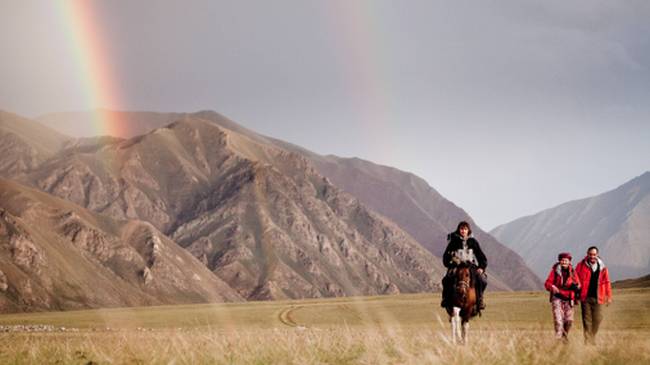
Mongolia In the Footsteps of the Nomad with Tim Cope
Activities:.
Moderate to Challenging
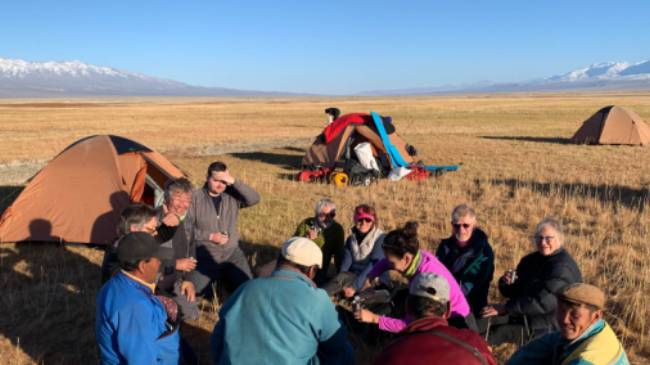
Mongolia Nomad Explorer with Tim Cope
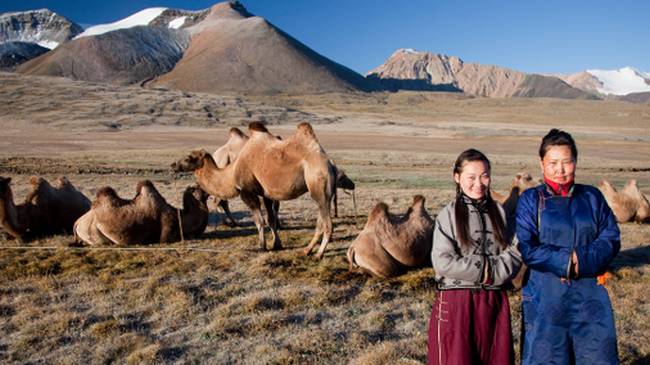

Mongolian Panorama
Introductory to Moderate
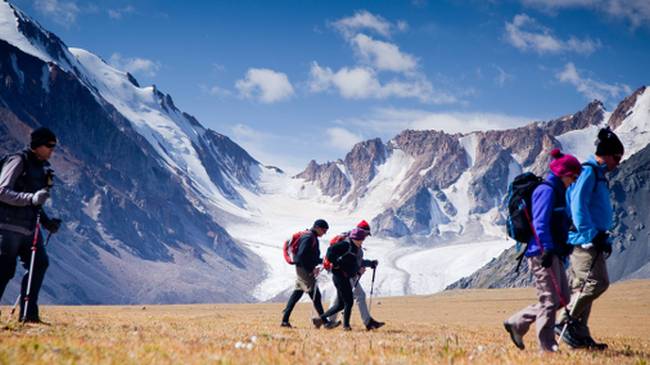
Mongolian Tavan Bogd Trek
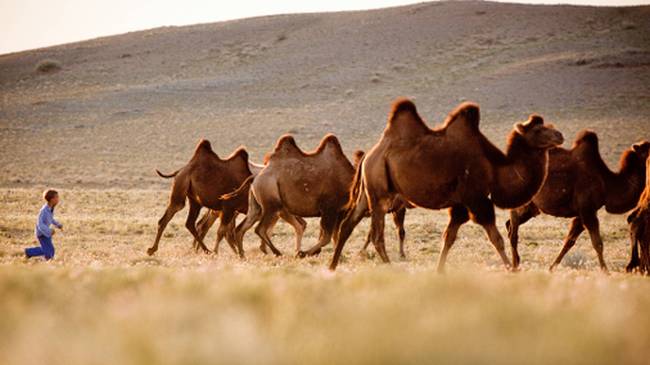
Gobi Desert Explorer
Adventure touring, more about mongolia, popular activities.
- Mongolia destinations
- Popular travel regions
Why travel with us
Responsible travel, accommodation, leaders in the field, custom made itineraries.
- Related articles
Trip reviews
Country information.
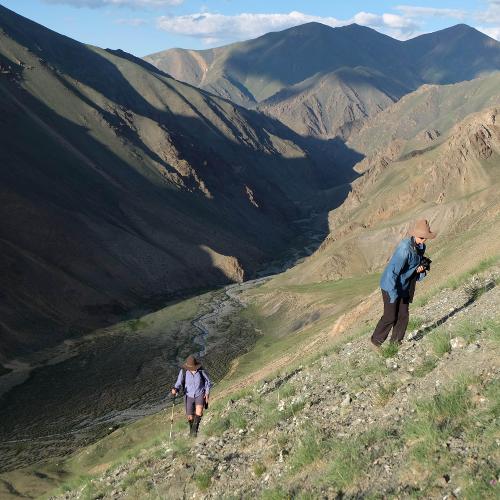
Mongolia Hikes
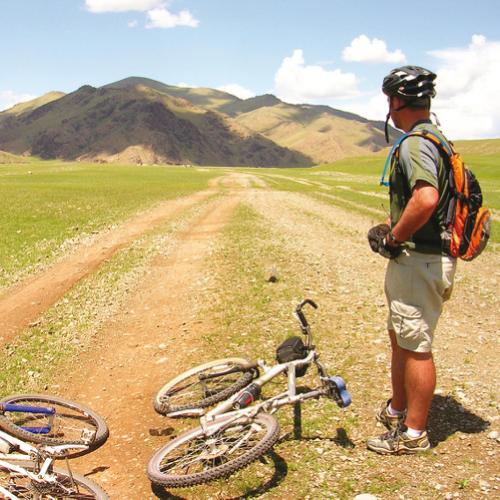
Cycle Mongolia
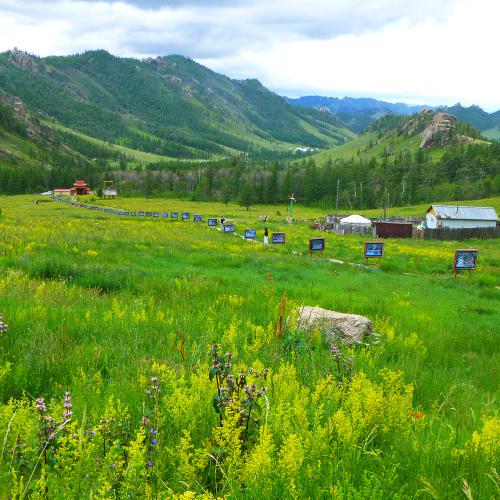
Mongolia highlights
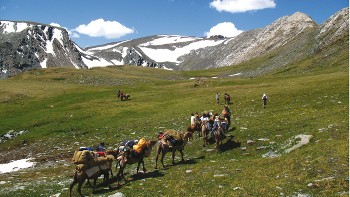
Experience nomadic culture and traditions
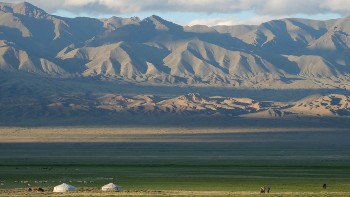
See the Mongolian steppes
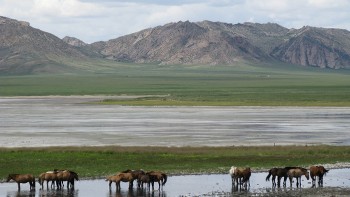
Hike the Gobi Desert
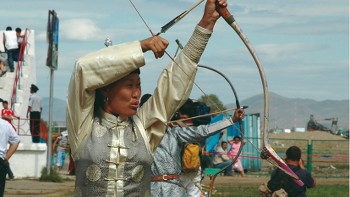
Enjoy the Naadam Festival
Explore the ruins of karakorum, shop at the naran tuul market, learn about the ancient culture.
Our all inclusive approach
Our extensive range of Mongolian adventures are competitively priced and original in the marketplace, resulting in exceptional value for money. We aim to incorporate as many inclusions as possible in the tour cost, such as most meals, internal flights, private transportation and handpicked accommodation.
Authentic Mongolian experiences
Featuring cultural and active elements, our Mongolian trips are designed to provide you with the most authentic and realistic insight into the amazing landscape and population that is possible. The vast open spaces of Mongolia and the nomadic lifestyle of its people lend themselves perfectly to an unforgettable outdoor experience.
Experienced local guides
Our experienced leaders are passionate, personable and proud to show you their Mongolian home. Hailing from local communities, the guides are willing to go the extra mile to ensure you leave with only the best experiences and memories.
Cultural preservation
Prior to a trip, travellers receive information about Mongolian nomadic culture. We provide opportunities for travellers to interact with local people so that knowledge is shared and the culture is understood and appreciated.
Animal welfare focus
We hire horses and camels from local people who manage the care and welfare of the animals in line with our Animal Welfare Code of Conduct.
Minimal impact on nature
We take out all that we bring in, use solar energy to charge batteries, minimise water wastage, boil safe drinking water for travellers to fill their reusable water bottles and never use soap or chemicals near rivers and streams.
In Mongolian cities or large towns you will be accommodated in 3 to 4 star properties that are centrally located, atmospheric and reliable.
We use quality inns typically situated in natural environments. They are not luxury inns however we ensure they offer you a truly authentic experience.
Enjoy our fully supported camping in quality two person tents erected in scenic wilderness.
A ger is a circular felt tent used by nomadic people in Mongolia that is warm in winter and cool in summer, providing a fantastic cultural experience.
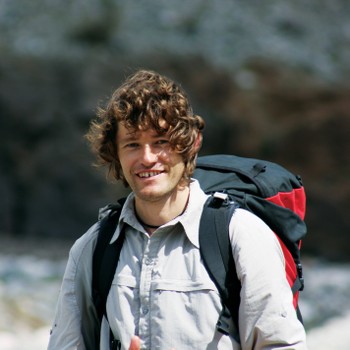
Tim's adventures include a 14 month cycle trip from St Petersburg to Beijing and a three year Mongolia to Hungary traverse on horseback. An accomplished writer and documentary maker, he is also a past recipient of the 'Australian Geographic Adventurer of the Year Award'.
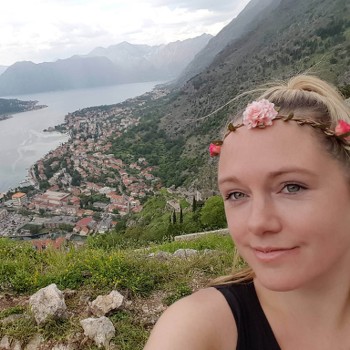
Originally from the United Kingdom, Laura brings a wealth of travel experience to the World Expeditions team having explored over 60 countries to date. Her adventures have included setting up community projects in Myanmar, studying Mandarin in China, trekking in Nepal, spending time in a remote Bedouin camp in Jordan and chasing the Big 5 through Tanzania. With a particular passion for all things Asia, Laura loves to share the best of this region with others.
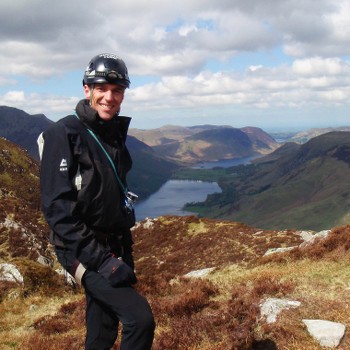
Dr Ross Anderson
Dr Anderson lives with his wife in a small town near the Lakes District in the north of England. He is a family doctor and spends much of his spare time travelling as an expedition doctor. He has more than 10 years of altitude and travel medicine experience. Previous treks and expeditions have focused on the Himalayas, with others in the Scandinavian Arctic and mountainous areas of Africa. He also enjoys trail running, cycling and open-water swimming.
A custom made itinerary is the ultimate way to see the world how YOU want. They are created especially for you, giving you complete freedom to choose what you want to see, where you want to go and when you want to do it. If you love our current itineraries but want to customise it privately as a couple, a group of friends, family, club, business or school, you have the freedom to add or remove as many elements as you like to suit the interests of your group. Alternatively, you can start with a blank canvas and create a new and exciting itinerary from scratch! Our well-travelled consultants can give you firsthand suggestions and eliminate any uncertainty with trip planning to ensure you maximise the quality of your experience and get truly off the beaten track. Simply email, phone or visit us to start planning your dream adventure.
Related Articles
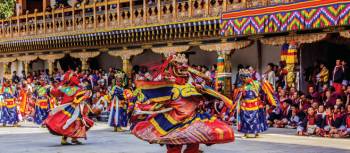
Rating: ☆ ☆ ☆ ☆ ☆ ☆ ☆ ☆ ☆ ☆ ☆ ☆ ☆ ☆ ☆ ☆ ☆ ☆ ☆ ☆ ☆ ☆ ☆ ☆ ☆ ☆ ☆ ☆ ☆ ☆
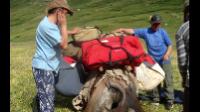
- Where to Go & Weather
- Dialing Code
Electricity
- Health & Safety
Where to Go
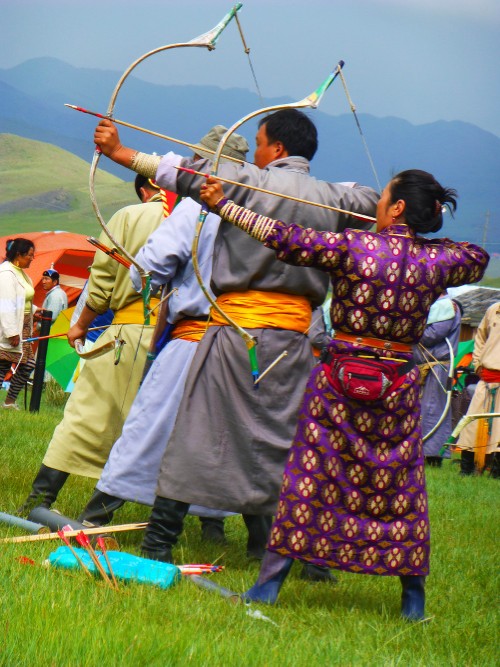
Experience the daily pattern of Mongolia’s nomadic traditions by arranging a stay in a family’s ger
Mongolia’s biggest drawcard is its incredible scenery: choose from grass-covered steppes, sparkling lakes or forested high mountains and plan a hike or camping trip, or do as the locals do and grab a horse (and a guide!) and venture out into Mongolia’s pristine wilderness
Arrange a camel trek into the otherworldly expanse of the Gobi Desert
Explore the ruins of Karakorum, the 13th century capital of Genghis Khan’s Mongol Empire in the beautiful Orkhon Valley
Catch a performance of traditional Mongolian folk dance, music and throat singing in Ulaanbaatar
While in the capital, learn about Mongolia’s rich history with a visit to the Zanabazar Museum of Fine Art
Don’t miss the Naadam Festival, the country’s biggest annual party, where you can experience traditional costumes, dance, music, food and religious ceremonies as well as watch local men and women compete in a huge two-day tournament of the country’s three beloved ancient sports of wrestling, archery and horse racing
Shop for food, fresh produce, clothing, trekking gear, saddles, religious trinkets, traditional handicrafts, souvenirs and just about anything else you can think of at Ulaanbaatar’s giant Naran Tuul Market (nicknamed Khar Zakh or “Black Market”)—but beware of pickpockets and be sure to leave anything of value at home
See an entirely different side to Mongolia by visiting in winter: rug up like the locals do and head to the frozen Lake Khövsgöl for the annual Ice Festival, or watch fluffy Bactrian camels and their herders race and play polo at the Gobi Desert’s Thousand Camel Festival
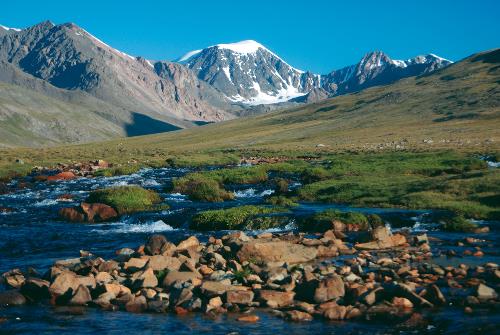
Mongolia’s location deep within central-eastern Asia, at generally high elevation and latitude and far from the moderating effects of any ocean or significant body of water, gives it a classic continental climate with long cold winters, short mild-to-hot summers, and dramatic annual and diurnal (daily) temperature fluctuations.
A major feature of Mongolia’s climate is its zuds (or dzuds), harsh winter conditions that kill millions of head of livestock each year, devastating Mongolia’s pastoral economy and the livelihood of its people. Mongols classify four different types of zud: white, black, cold and ice/iron. The white zud occurs when heavy snow stops animals from accessing the grasses beneath. The black zud occurs when freezing temperatures and a lack of snow cause drought, depriving animals of grasses. The cold zud occurs when temperatures are so low that animals must conserve energy rather than graze. The ice/iron zud occurs when heavy rains freeze on the ground, stopping animals from accessing the grasses beneath. In each variation, millions of animals can be lost, and herders can face multiple zuds in a bad year.
Precipitation is generally low, with Mongolia being well known for its remarkable number of clear, sunny, blue-sky days, averaging between 220-260 per year. Pre-Buddhist animist Mongols worshipped the “Eternal Blue Sky”, and Mongolia is lyrically referred to as “The Land of Eternal Blue Sky”.
Having said that, the weather is unpredictable and can turn ugly in an instant, with thunderstorms, hailstorms, sandstorms, heavy rains, ice, snowfall and fierce blizzards being a part of life.
Mongolia experiences extreme annual and diurnal (daily) temperature fluctuations. The temperature can vary as much as 44°C (80°F) between January and July, and variations of up to 30°C (55°F) in happen a single day.
In the capital of Ulaanbaatar, average daily temperatures vary from a minimum of -25°C (-13°F) to a maximum of -14.4°C (7°F) in January; to a minimum of 10°C (50°F) to a maximum of 21.8°C (71°F) in July.
Time in Mongolia
Mongolia is +8 hours ahead of UTC/GMT
Mongolian is the primary and official state language, spoken by 95% of the population. The language was written using the unique Mongolian vertical script until the 1940s, when it was replaced by the Cyrillic alphabet. The traditional alphabet is now being slowly reintroduced in schools, with the government planning to officially reinstate the traditional Mongolian alphabet at some point.
Many different dialects of Mongolian are spoken throughout the country, as well as other languages: Khamnigan Mongol, Kazakh, Tuvan and other Turkic languages.
Russian is the most common foreign language in Mongolia, followed by English. Korean is becoming increasingly common due to the many Mongolian ex-pats working in South Korea. Chinese, Japanese, German and various other European and Asian languages are also spoken.
USD cash is the most easily convertible currency although bear in mind that many other currencies such as AUD, GBP, NZD, CAD are also widely convertible in Ulaanabaatar.
In recent years ATMS have become very common in Ulaanbaatar, as well as vendors (big and small) accepting credit card/debit card payments. We recommend that whilst having some cash with you is always a good backup, withdrawing local currency via an ATM as the simplest way of procuring cash. TIP: You can withdraw cash at the airport on arrival with the help of the guide/driver who meets you. Just make sure your card is activated for overseas usage, and you know your card access details. Please note that ATMs in Mongolia do have maximum withdrawal amounts per transaction which is usually somewhere between 400,000-800,000 MNT. This may mean that before heading out into the remote country you make more than one withdrawal.
It is very difficult to change money outside of the capital Ulaanbaatar, so please ensure that whatever you intend to spend during the journey you have in local currency.
Please note that if bringing USD cash denominations less than $50 incur a poorer exchange rate.
ATMs outside Ulaanbaatar are few (they do exist in Olgiiy) and VERY unreliable.
Many shops and restaurants (only in Ulaanbaatar) accept visa, Mastercard, Amex and JCB.
Cash advances can be made at the banks for a fee.
International Dialing Code

Electricity in Mongolia is 230 Volts, at 50 hertz. The most common pin type is C. (2 round prong).
In connection with the decision of the Government of Mongolia to declare 2023-2025 “Years to visit Mongolia” there is now a temporary exemption from visa requirements for the nationals of 34 countries, including Australia, New Zealand, the UK for stays up to 30 days. These 34 countries join the current 27 with existing exemptions which include the US and Canada. All other nationalities should check with your nearest embassy or consulate for visa requirements.
Your safety is our number one concern. Our safety track record is exemplary thanks to careful management and thorough consultation with local partners. Our industry leading risk management procedures have become a skill that we continue to refine. Our leaders in the field are highly trained and have safety as their number one priority. Expert leaders, risk assessments, quality inclusions and your financial security all come standard when you travel with us.
Please refer to our Travel Advisory page for updates on recent events, travel warnings and advice.
We strongly recommend that all clients take out travel insurance at the time of booking to cover against sickness, accident, loss of baggage, unexpected alterations to travel arrangements and travel disruption, emergency evacuation, cancellations, etc. Insurance information is enclosed with your pre-departure information. Please contact us if you would like to obtain a quote for your trip duration.
We suggest that you consult your doctor, local government inoculation centre or a travel medical specialist in order to get the most current advice regarding vaccination requirements.
Money and valuables should always be stored safely when travelling. Keep your passport with you at all times and do not leave it in your main luggage. You will need it to change money and check into hotels. Where safety deposit boxes are available, we recommend that you use them. Keep jewellery and valuables to a minimum.
- Cookie Policy
- Strictly Necessary
- Performance
When you visit any web site, it may store or retrieve information on your browser, mostly in the form of cookies. This information might be about you, your preferences, your device or used to make the site work as you expect it to. The information does not usually identify you directly, but it can give you a more personalized web experience. You can choose not to allow some types of cookies. Click on the different category headings to find out more and change our default settings. However, you should know that blocking some types of cookies may impact your experience on the site and the services we are able to offer.
These cookies are necessary for the website to function and cannot be switched off. They are usually only set in response to actions made by you which amount to a request for services, such as setting your privacy preferences, logging in or filling in forms. You can set your browser to block or alert you about these cookies, but some parts of the site will no longer work. These cookies do not store any personally identifiable information.
These cookies allow us to count visits and traffic sources, so we can measure and improve the performance of our site. They help us know which pages are the most and least popular and see how visitors move around the site. All information these cookies collect is aggregated and therefore anonymous. If you do not allow these cookies, we will not know when you have visited our site.
These cookies allow the provision of enhance functionality and personalization, such as videos and live chats. They may be set by us or by third party providers whose services we have added to our pages. If you do not allow these cookies, then some or all of these features may not function properly.
These cookies are set through our site by our advertising partners. They may be used by those companies to build a profile of your interests and show you relevant ads on other sites and promotional activities through our newsletters. They work by uniquely identifying your browser and device. If you do not allow these cookies, you will not experience our targeted advertising across different websites or via newsletters.

IMAGES
VIDEO
COMMENTS
Tim currently splits his time between Melbourne, Australia, where he is a regular speaker in schools, and remote Mongolia, where he takes people on nomadic adventures annually. Contact Find Tim on your favorite social media platform or send a message regarding his upcoming treks, speaking availability and a book tour event near you.
Find Tours. Search Results Add your search result page title & sub title. HOME; SEARCH; FILTER. Select Region. Activity Theme. Activity Level. ... Get news and updates via email. Tim Cope Journeys Tim Cope Journeys. Toggle Navigation. Home; About; Book Tour; Treks; Store; Blog; Contact; Adventure Writing Blog (for Kids) Login; Cart; Cart 0 ...
Tim Cope. 12,830 likes · 1 talking about this. Tim Cope (National Geographic Adventure Honoree 2008, Australian Adventurer of the year 2006) is a 30 year old author, film maker, guide and presenter.
Tim Cope is an award winning adventurer, author, and film-maker who is passionate about adventure as a vehicle for understanding landscape, culture and history. His most renowned journey was a three year, 10,000km horse back trek from Mongolia to Hungary across the great Eurasian Steppe.
Join Australian adventurer and writer Tim Cope for a unique moderate-challenging trek among remote Khoton and Kazakh nomads in the Kharkhiraa and Tsaast Uul mountains of Western Mongolia. The focus of this trip is spending less time crossing the vast landscape of Mongolia by jeep, and more time trekking off the beaten track immersed in the ...
Franklin River Trip highlights. One of Australia's most pristine wilderness experiences. Visit Rock Island Bend, the Lost World and the Kutikina Aboriginal Cave. Journey with renowned adventurer and author Tim Cope, & Mongolian professor of biology, Khayankhyarvaa Terbish. Enjoy a sailboat journey back to Strahan along the Gordon River.
Share your videos with friends, family, and the world
In 2004, Australian adventurer and author Tim Cope set off on an epic 10,000 km journey from Mongolia to Hungry by horse. This journey took him three years and led him on a profound journey through the heart of nomad society on the Eurasian Steppe. ... These camels dutifully wait to be loaded up with trekking gear as support for the tour. Most ...
On The Couch with Tim Cope. It would be an understatement to say Tim Cope is an inspiring person. He has journeyed over 10,000km from Mongolia to Hungary by horse, rowed 4,500km in a leaky wooden boat down the Yenisey River from southern Siberia to the Arctic Ocean, and cycled from Moscow to Beijing by bike - a 10,000km journey that took him 14 ...
Tim Cope (born 7 December 1978) is an Australian adventurer, author, filmmaker, trekking guide, and public speaker who grew up in Gippsland, Victoria. He has learned to speak fluent Russian and specializes in countries of the former Soviet Union. Biography.
An Interview With Tim CopeAndrew Mazibrada. In Sidetracked Volume Four, we featured a story about Tim Cope's three year journey, on horseback, from Mongolia to Hungary, on the trail of Genghis Khan. His book based on the journey, On the Trail of Genghis Khan: An Epic Journey Through the Land of the Nomads (Bloomsbury) was awarded the Grand ...
It would be an understatement to say Tim Cope is an inspiring person. He has journeyed over 10,000km from Mongolia to Hungary by horse, rowed 4,500km in a leaky wooden boat down the Yenisey River from southern Siberia to the Arctic Ocean, and cycled from Moscow to Beijing by bike - a 10,000km journey that took him 14 months.
Find Tours. On the Trail of Genghis Khan: An Epic Journey Through the Land of the Nomads (paperback) $ 20.00 ... "Tim Cope's exploration across the continents on horseback grew into a quest through history and then an odyssey deep into the human heart. In exploring some of the most remote places on earth, he brings us back to ourselves and ...
Tim Cope is a 'long-rider', a special breed of explorer who travels to discover something of both the cultures they encounter and themselves. In 2004, Tim took equestrian long-riding to the extreme. He spent three years and four months covering 10,000 kilometres to become the first person in modern times to follow Genghis Khan's march ...
Tim's most renowned journey was an odyssey by horse on the trail of Genghis Kahn from Mongolia to Hungary. His book about the journey, On the Trail of Genghis Kahn, won the grand prize at the 2013 Banff International Mountain Book Festival. Would you please put your hands together for Tim Cope. [Applause] Tim Cope: Thanks Tehmi. I wanted to ...
Journey with Tim Cope into the heart of the oldest horseback nomad culture in the world on a tour that will take you from remote desert landscapes, to high glacier capped peaks and into the heart of Mongolia's most ethnically diverse region. ... In 2004, Tim Cope embarked on an ambitious journey to ride his horse from Mongolia to Hungary along ...
Korn Ferry Tour winner Tim Widing closes out second-round 8-under 63 Saturday morning, follows it with 6-under 65 in the afternoon to take two-stroke lead through 54 holes. Widing, who won last ...
Check the venue website leading up to your event for the latest protocols. Availability and pricing are subject to change. Resale ticket prices may exceed face value. Learn More. Buy Tim McGraw: Standing Room Only Tour 2024 tickets at the United Center in Chicago, IL for May 31, 2024 at Ticketmaster.
Tim McGraw is currently on the road with his Standing Room Only Tour and he'll be entertaining fans through June!. The 56-year-old country singer, who is touring with Carly Pearce, is performing ...
Frankie Capan III (4th/-24), who carded a 13-under 58 in Thursday's first round for the 13th sub-60 round and third round of 58 or lower in Korn Ferry Tour history, posts a third consecutive top ...
Tim Cope is an adventurer, author and film-maker who is passionate about inspiring young people to explore the world that exists beyond their doorstep. He has studied as a wilderness guide in the Finnish and Russian subarctic, ridden a bicycle across Russia to China and rowed a boat along the Yenisey River through Siberia to the Arctic Ocean.
Timothy Mayeux Obituary. Timothy "Tim" James Mayeux passed away on Saturday, April 20, 2024, at the age of 59. He was born in New Orleans, LA and was a resident of Luling, LA. Tim was a farmer, a hard worker, lover of all things mechanical, pilot for MYU Helicopters, a jokester with a strong accent, and a friend to everyone, whether you knew ...
What You Need to Know. Availability and pricing are subject to change. Resale ticket prices may exceed face value. Learn More. Buy Tim McGraw: Standing Room Only Tour 2024 tickets at the T-Mobile Center in Kansas City, MO for Jun 08, 2024 at Ticketmaster.
For adventurer and author, Tim Cope, it is the hospitality and ancient nomadic traditions that have drawn him time and time again to return to the mystical and ancient regions of western Mongolia. In 2004, Tim set off on a journey to travel 10,000 kilometres by horse in the spirit of nomads — from Mongolia to the Danube River in Hungary, and ...
Searching for information and tickets regarding Tim McGraw: Standing Room Only Tour 2024 2024 (Belmont Park - Long Island) | UBS Arena taking place in Elmont on May 9, 2024 (UTC-5)? Trip.com has you covered. Check the dates, itineraries, and other information about Tim McGraw: Standing Room Only Tour 2024 2024 (Belmont Park - Long Island) | UBS Arena now! Trip.com has also prepared more ...
Innovative Tours. This is Photoshop's version of Lorem Ipsum. Proin gravida nibh vel velit auctor aliquet. Aenean sollicitu Post by Peter Haynes. 0 Comments. Share; Tweet +1; Pin it; Recent. Tim & Tigon: An Epic Adventure in the Land of Nomads RELEASE 2019! ... Tim Cope Journeys
Explore Mongolia on a high quality active adventure tour. Choose from trekking the Altai or even cycling. Trans Siberian trip options also available. Travel to Mongolia with World Expeditions. ... Adventurer Tim Cope has journeyed over 10,000km from Mongolia to Hungary, rowed 4,500km in a leaky wooden boat down the Yenisey and cycled 10,000km ...